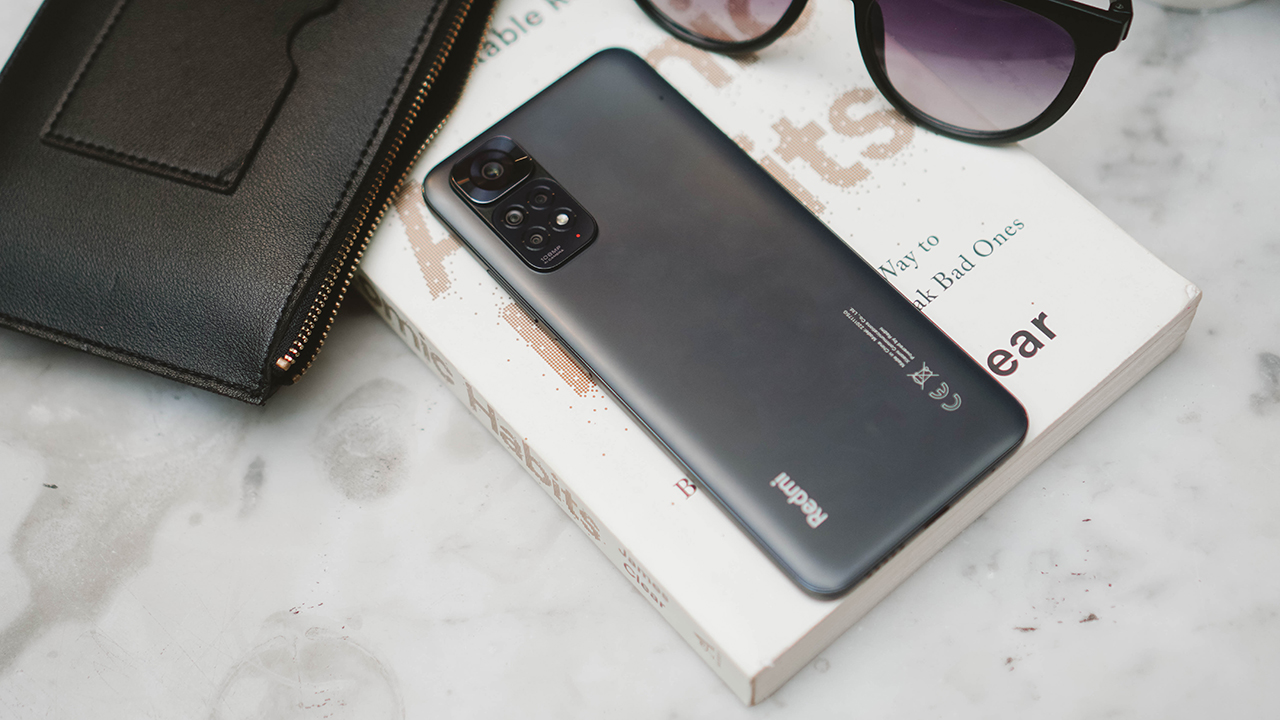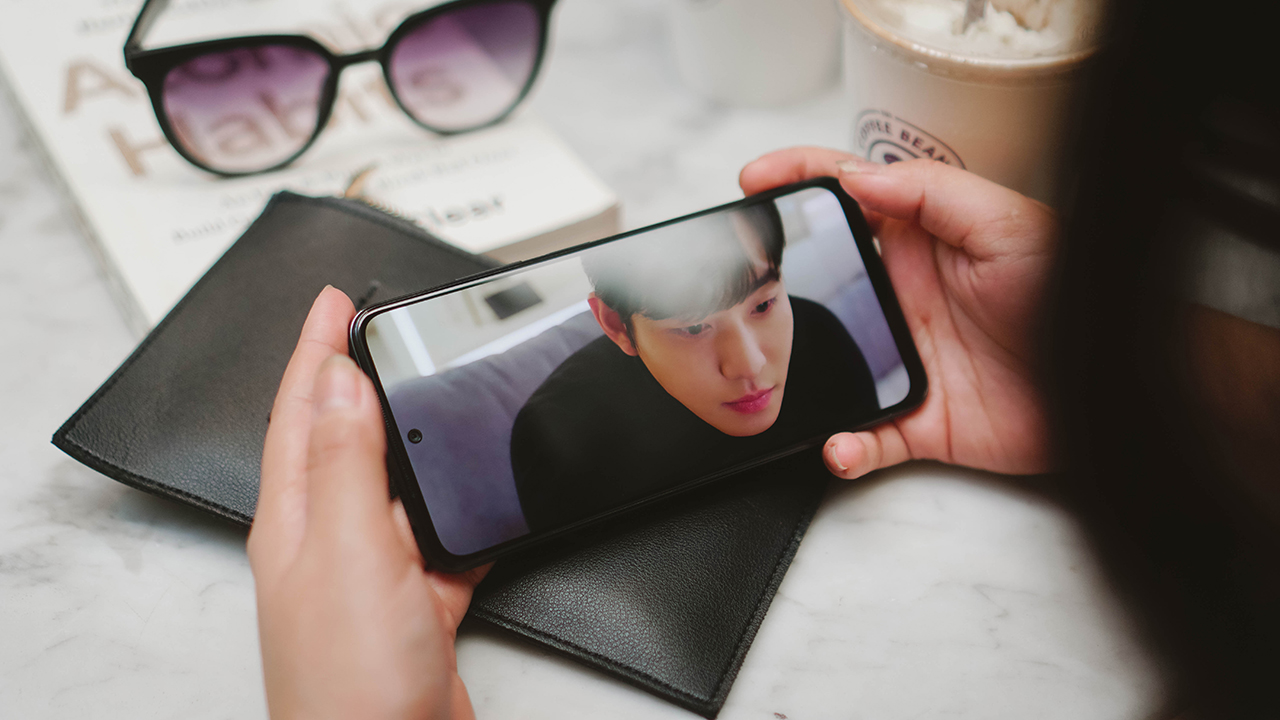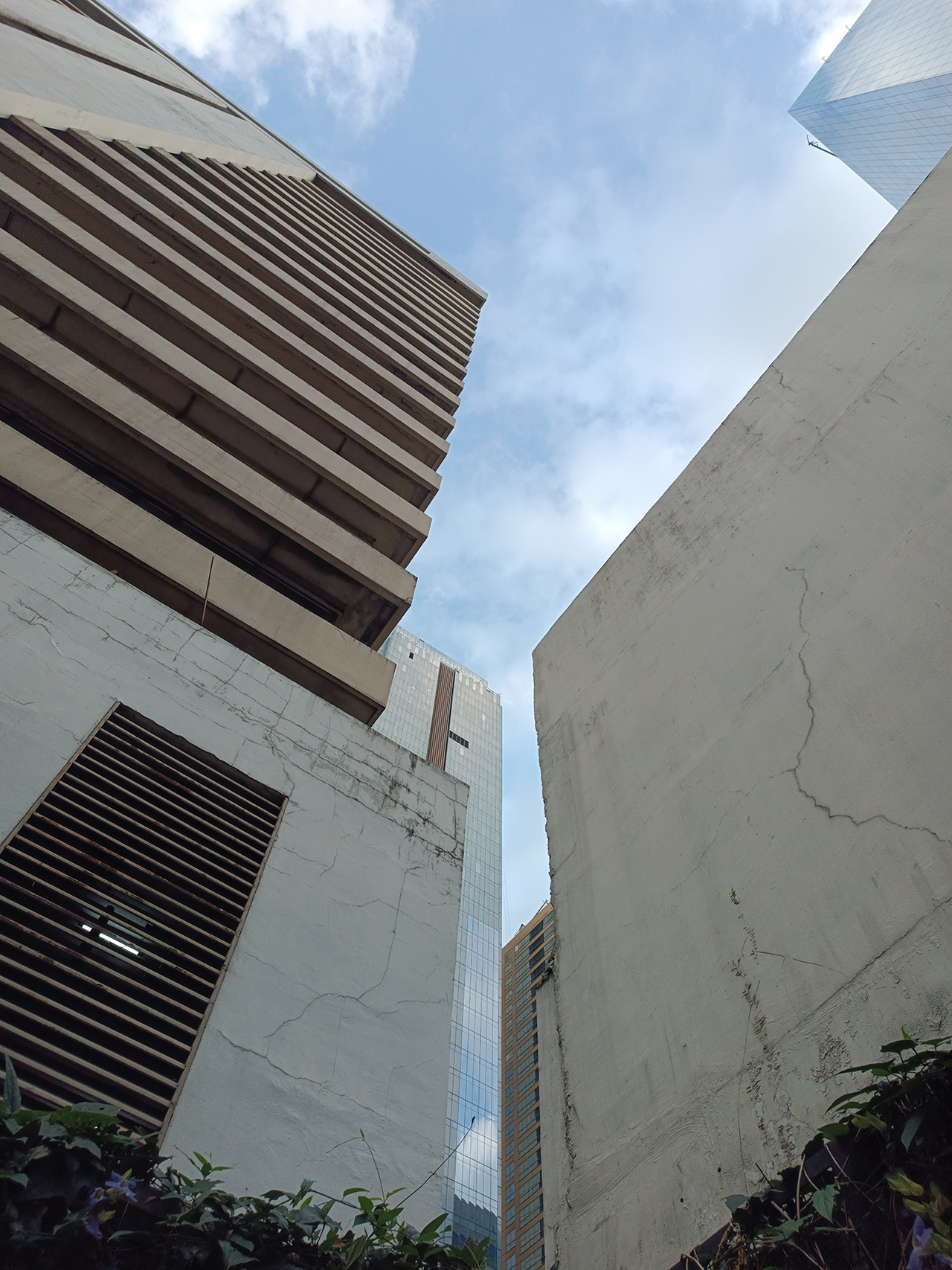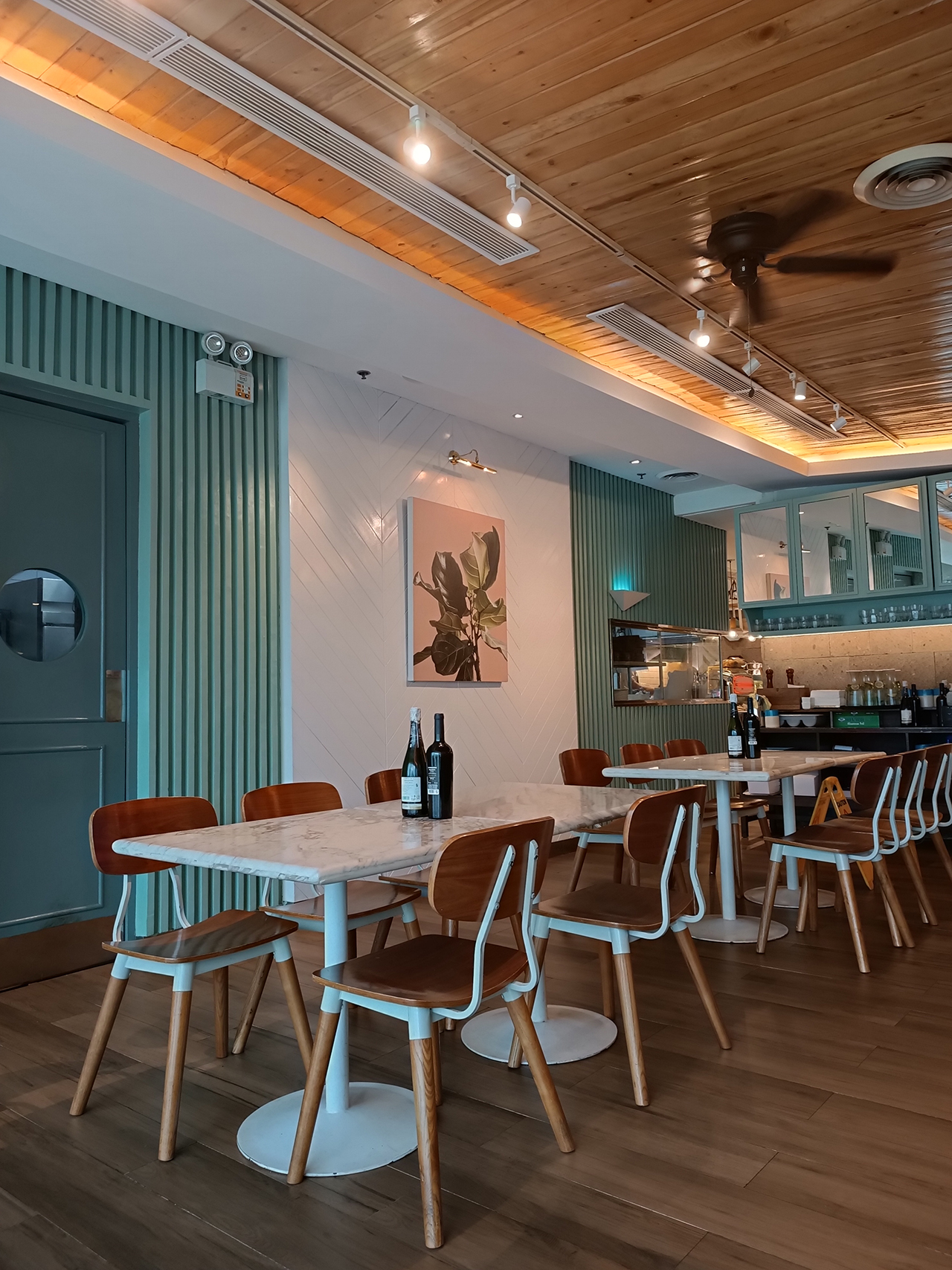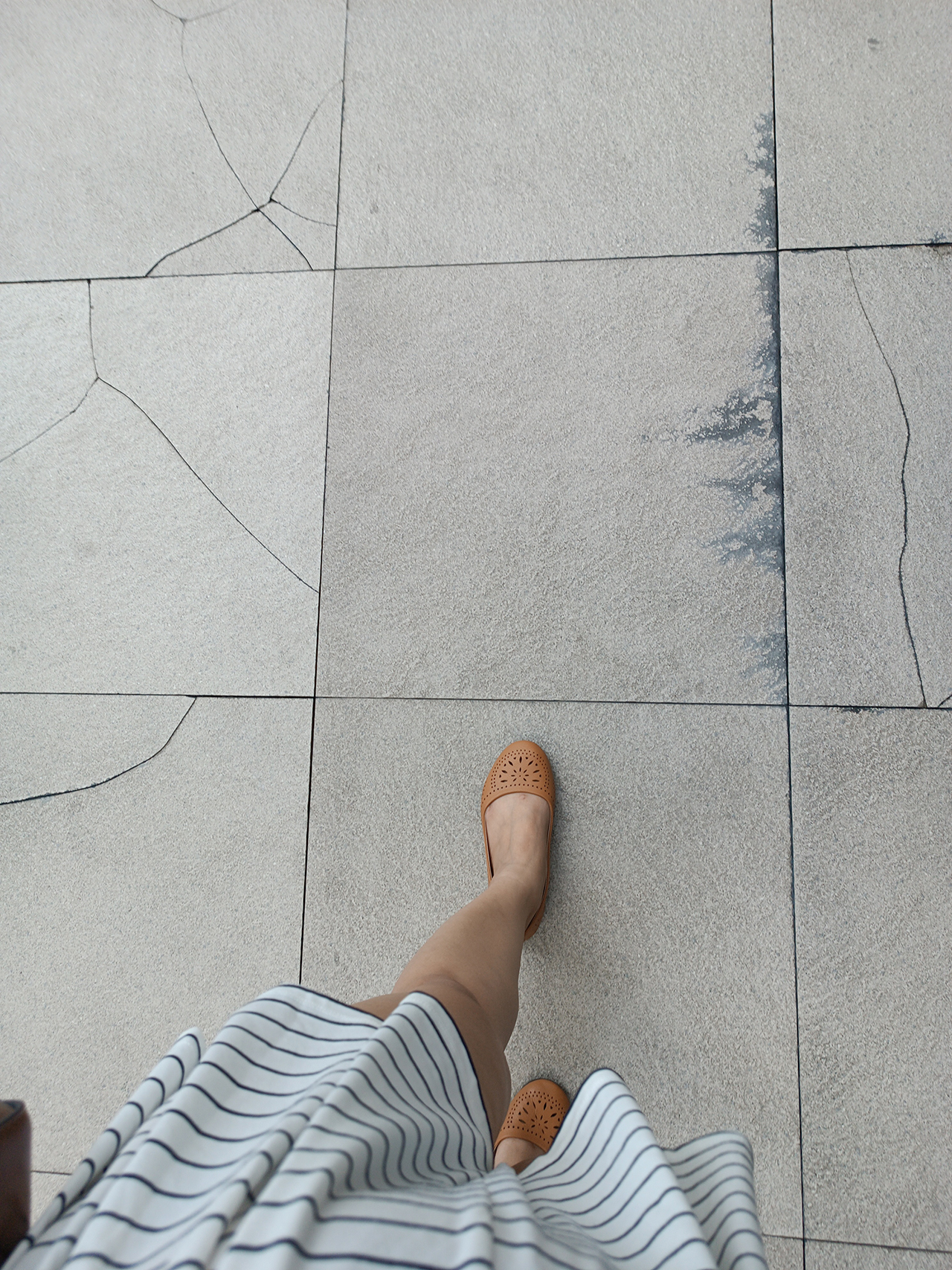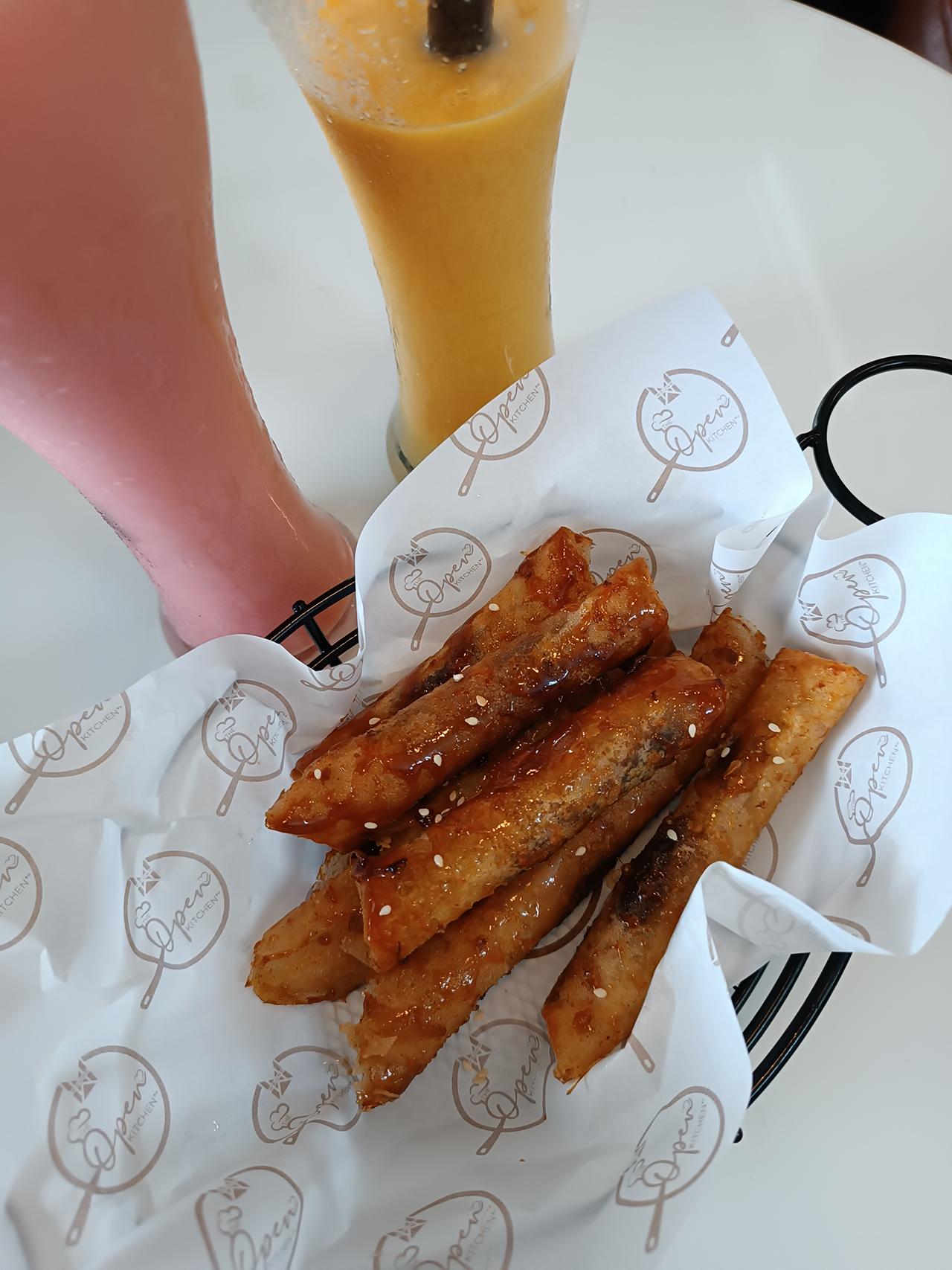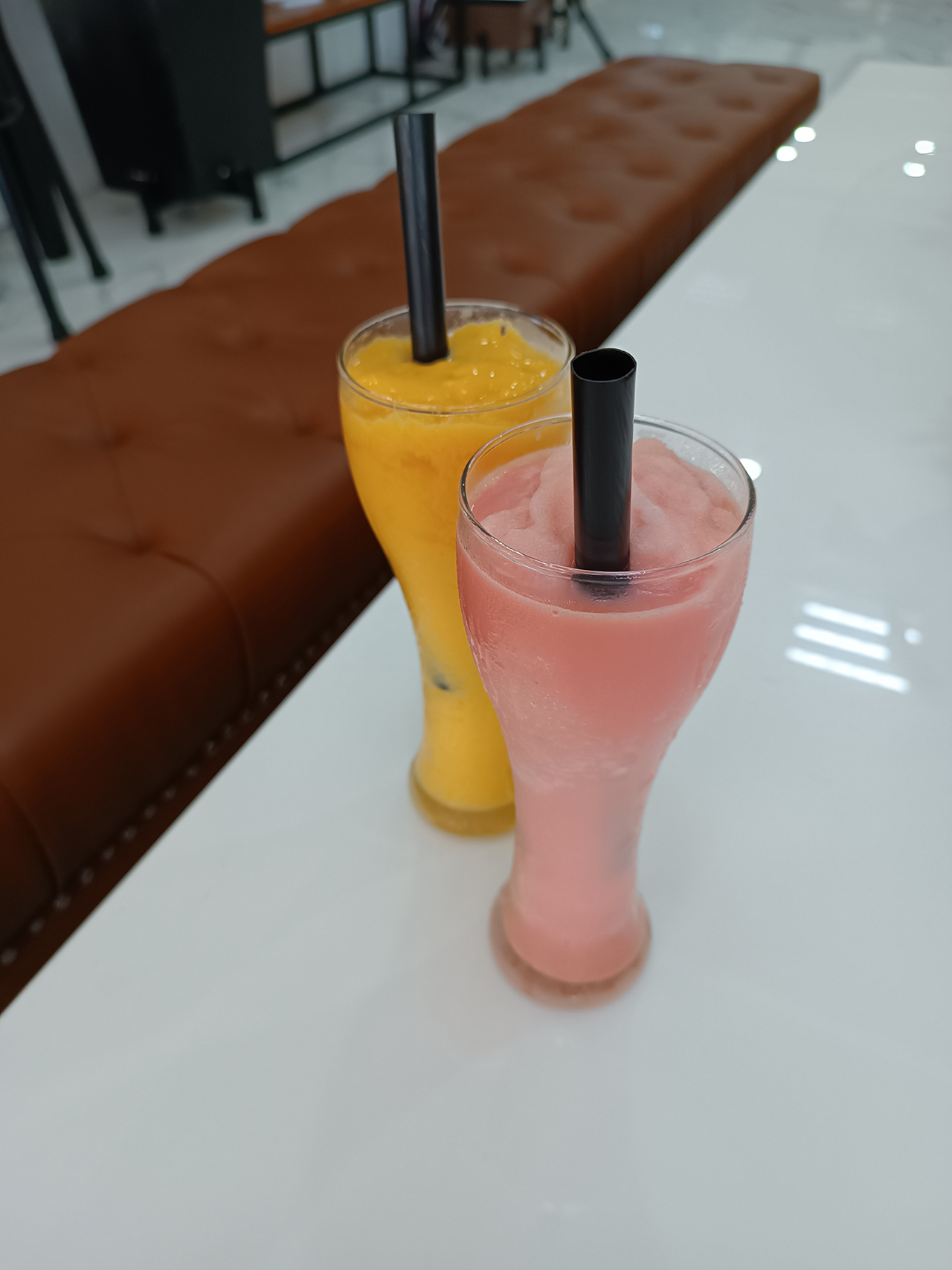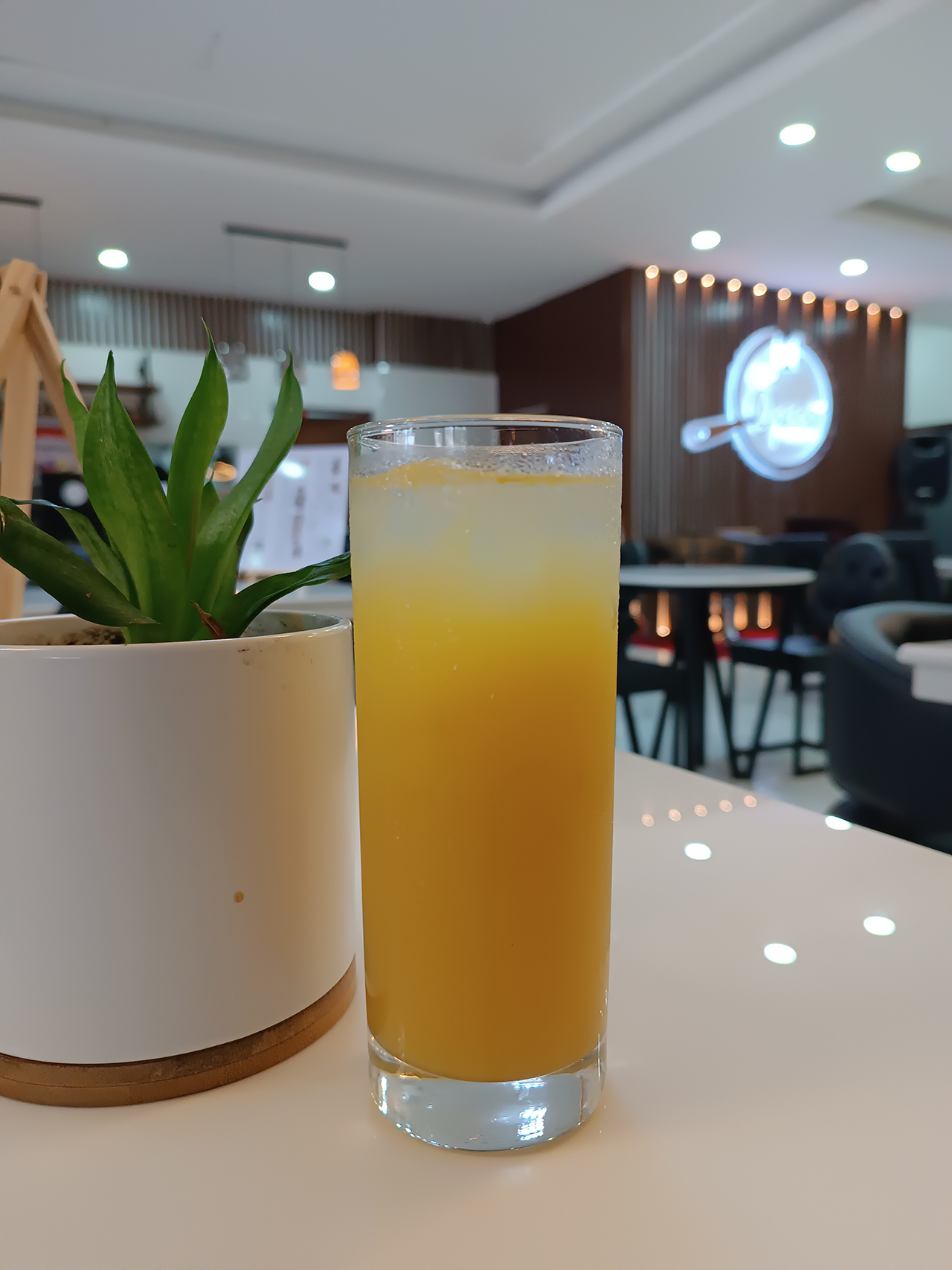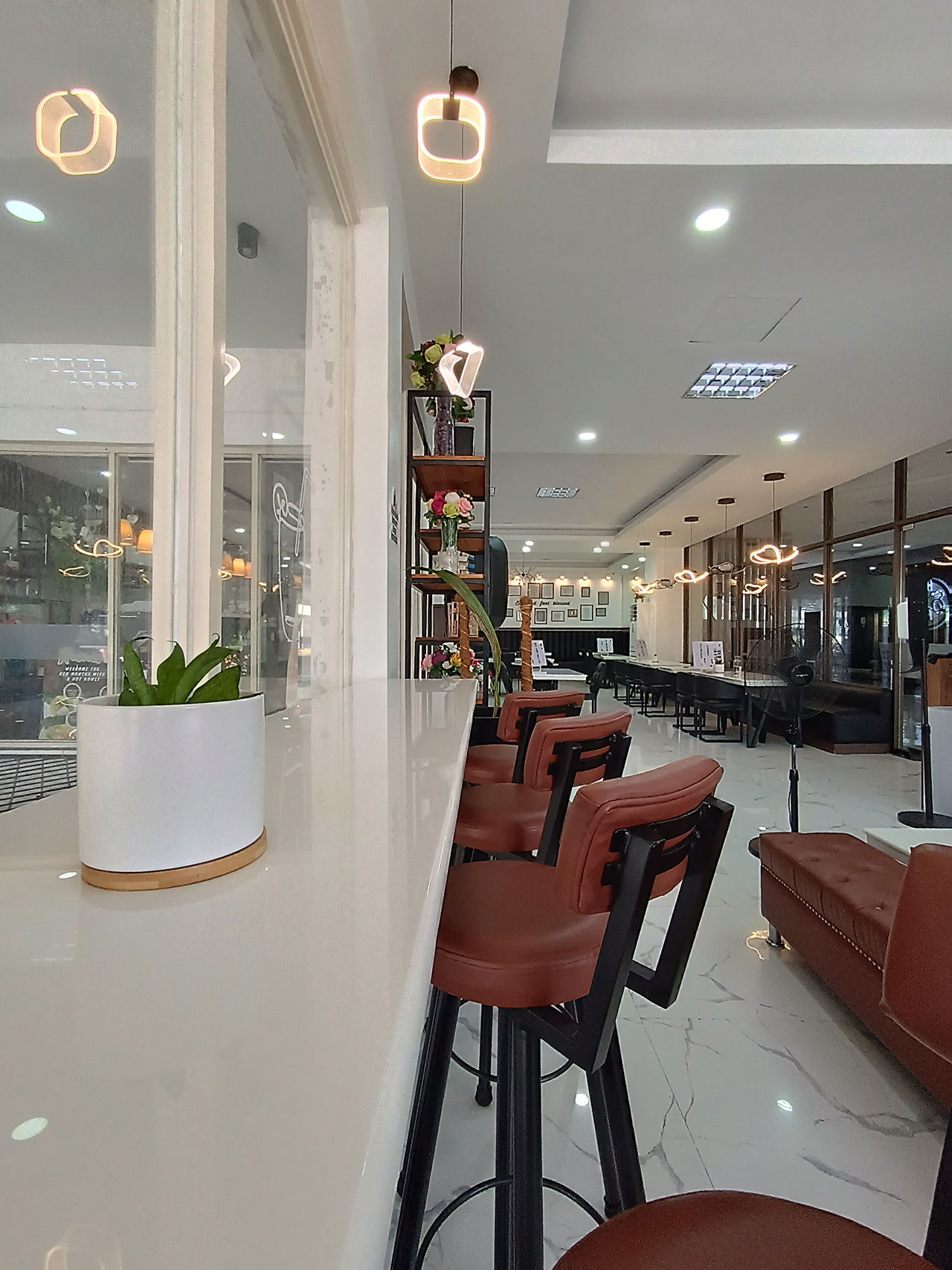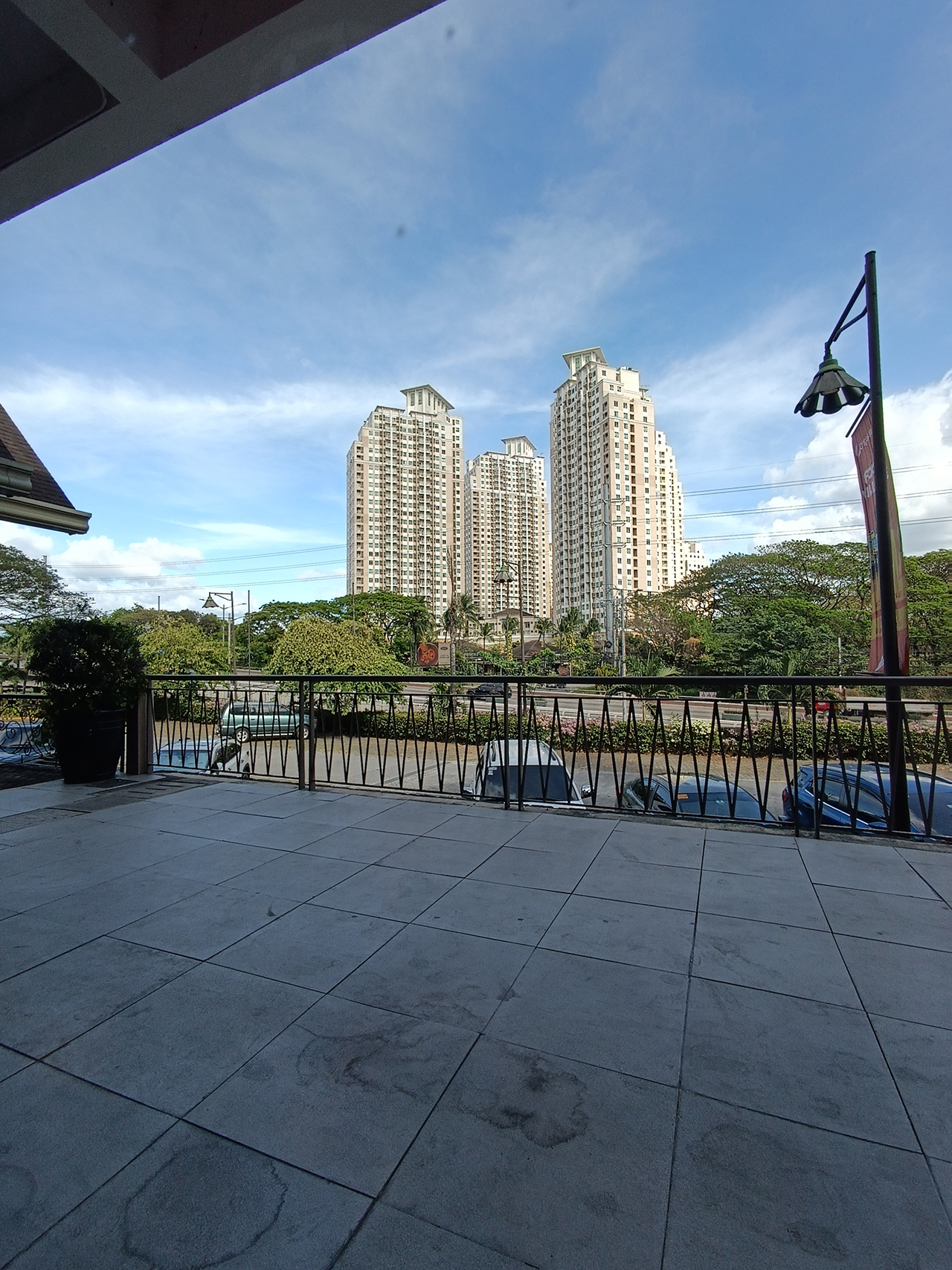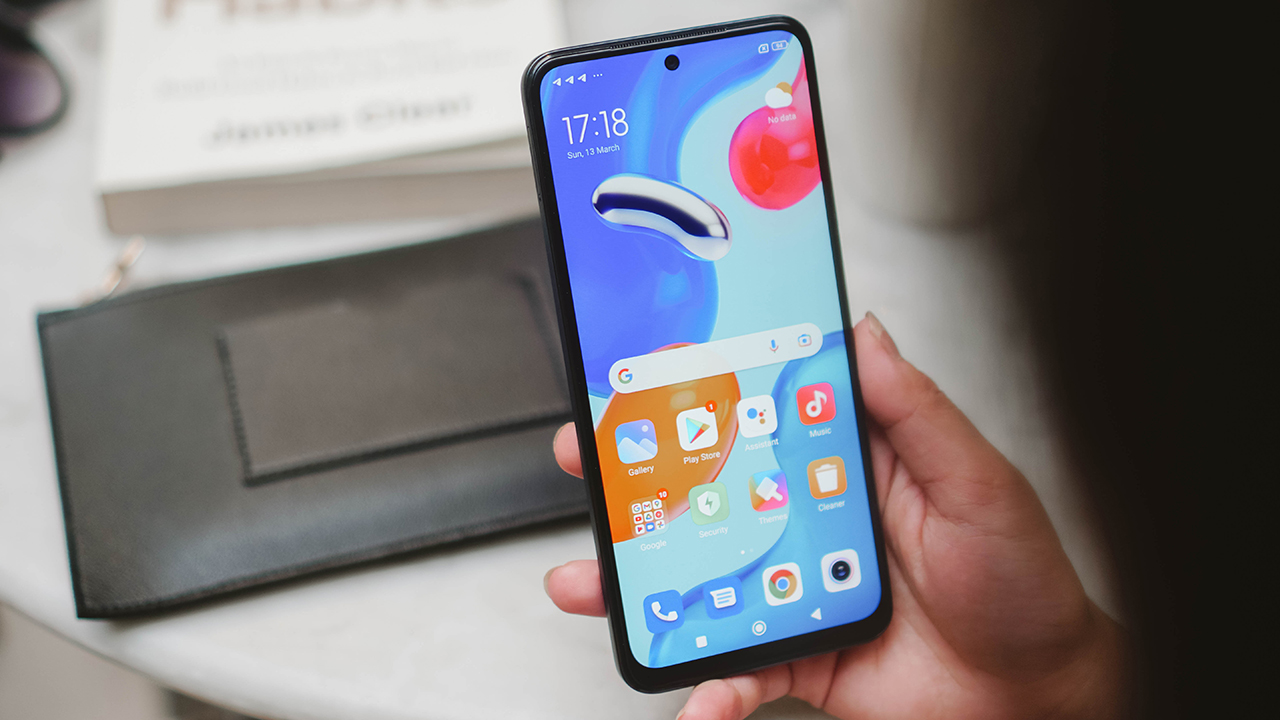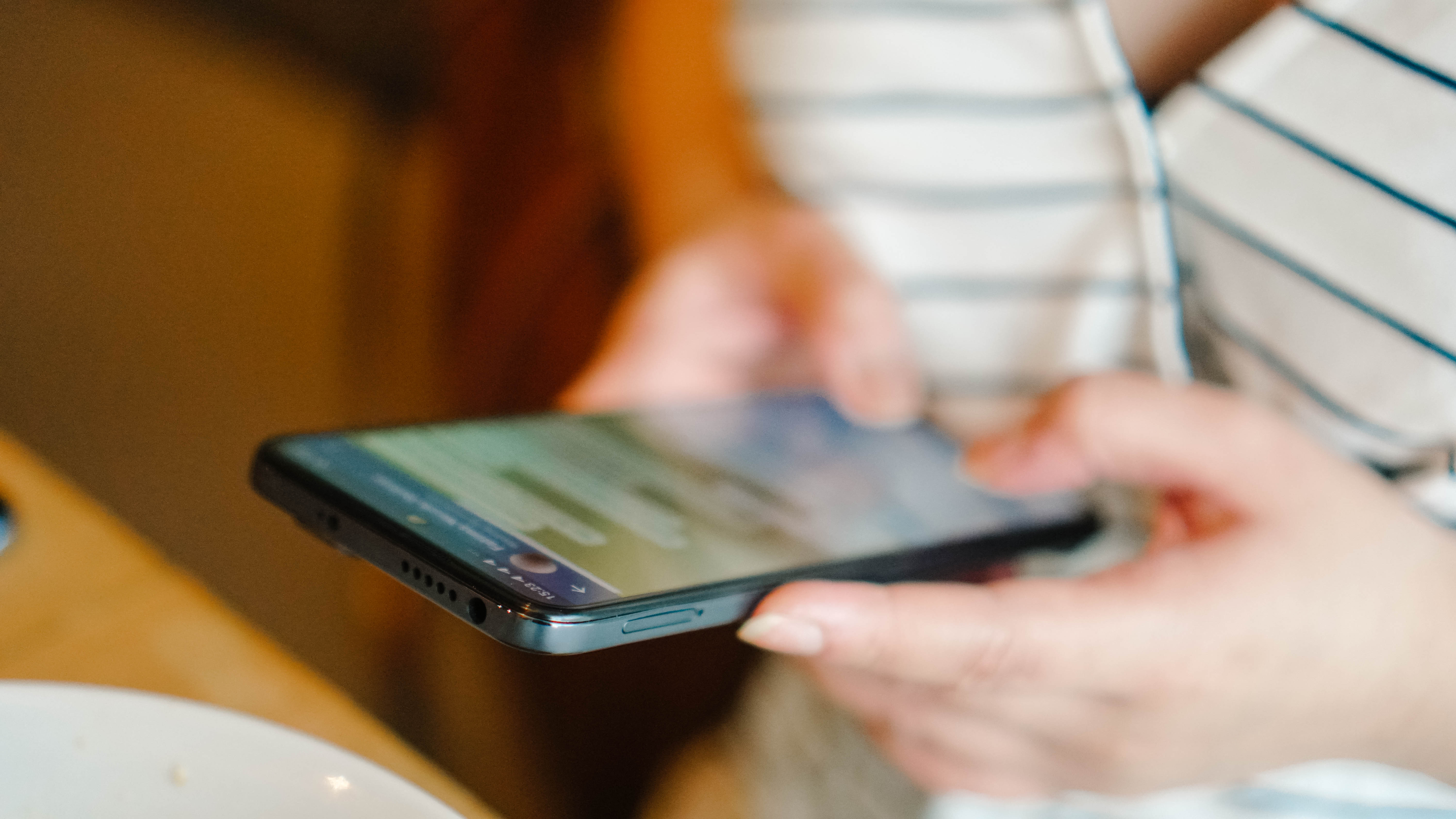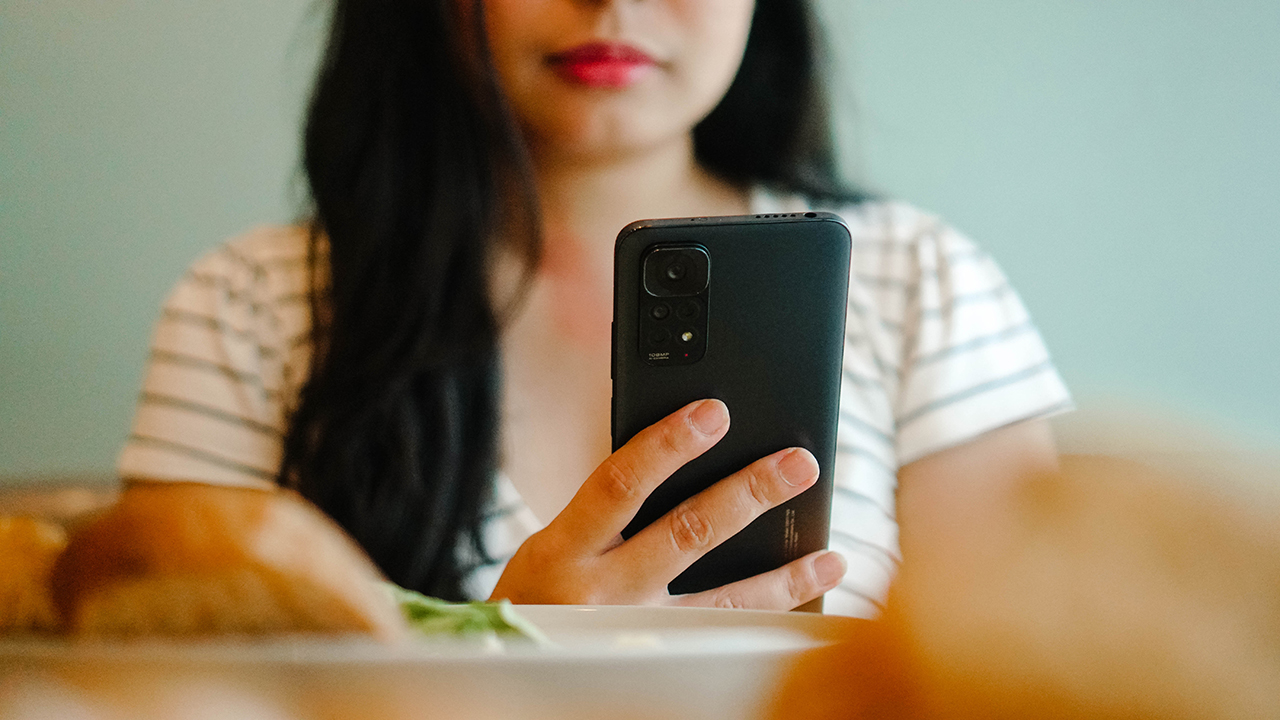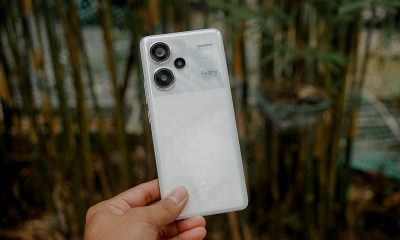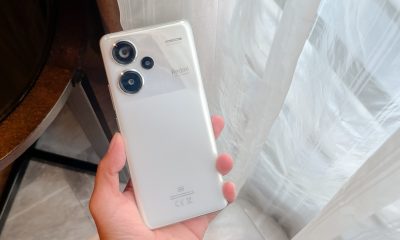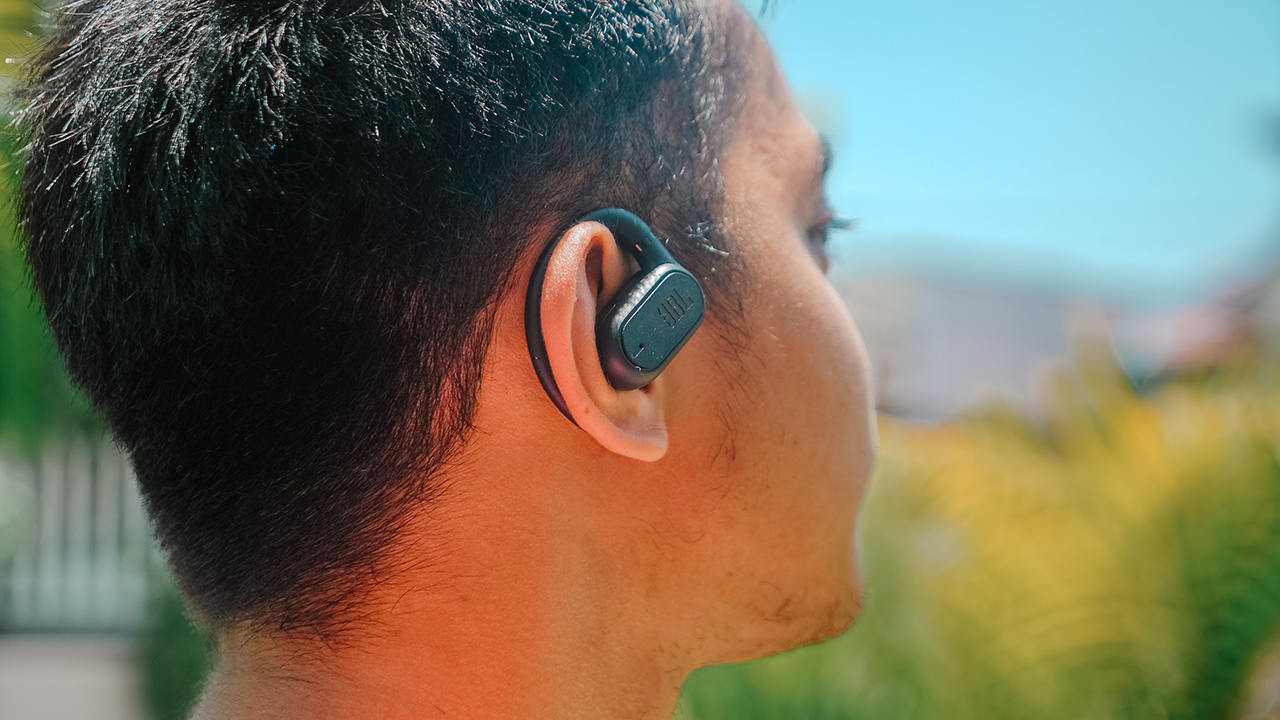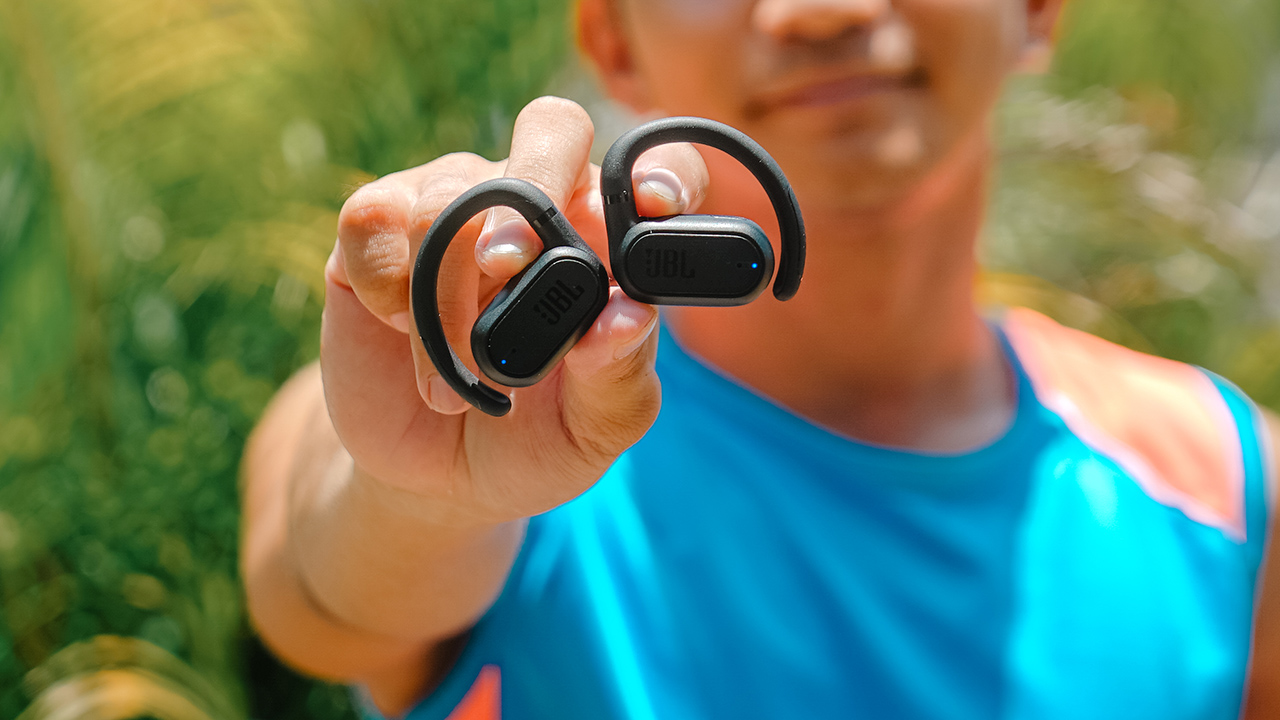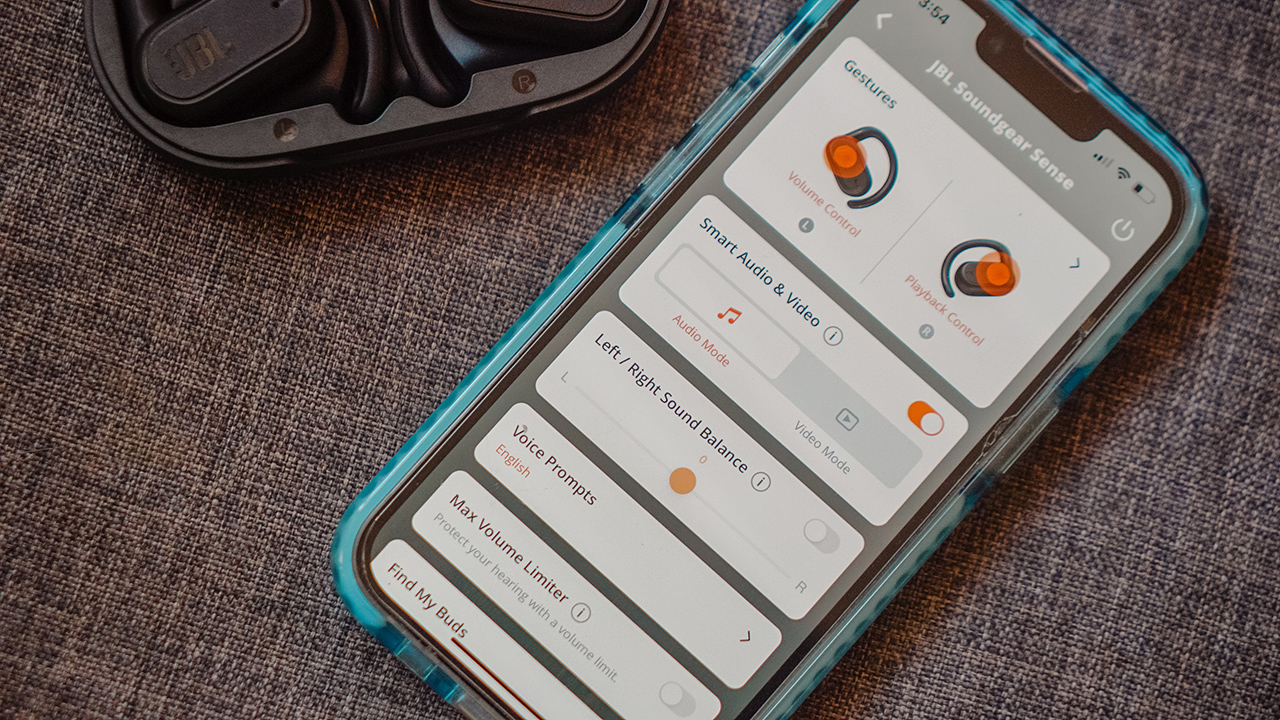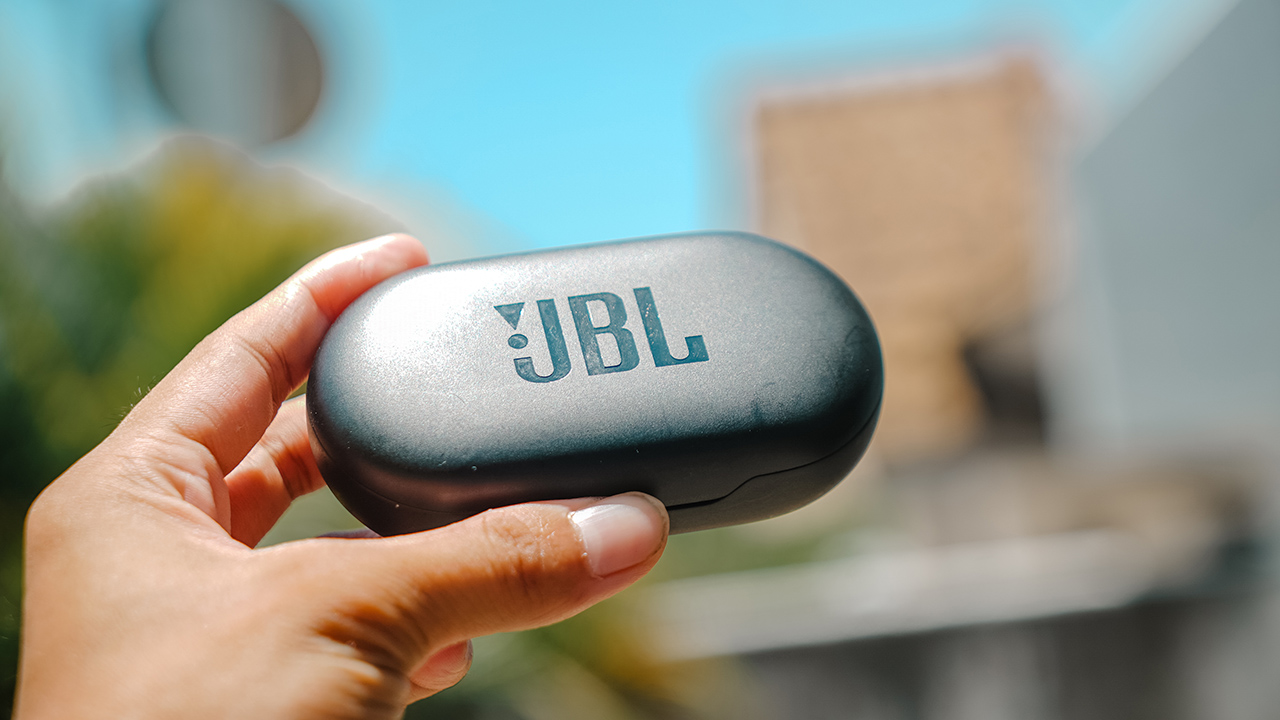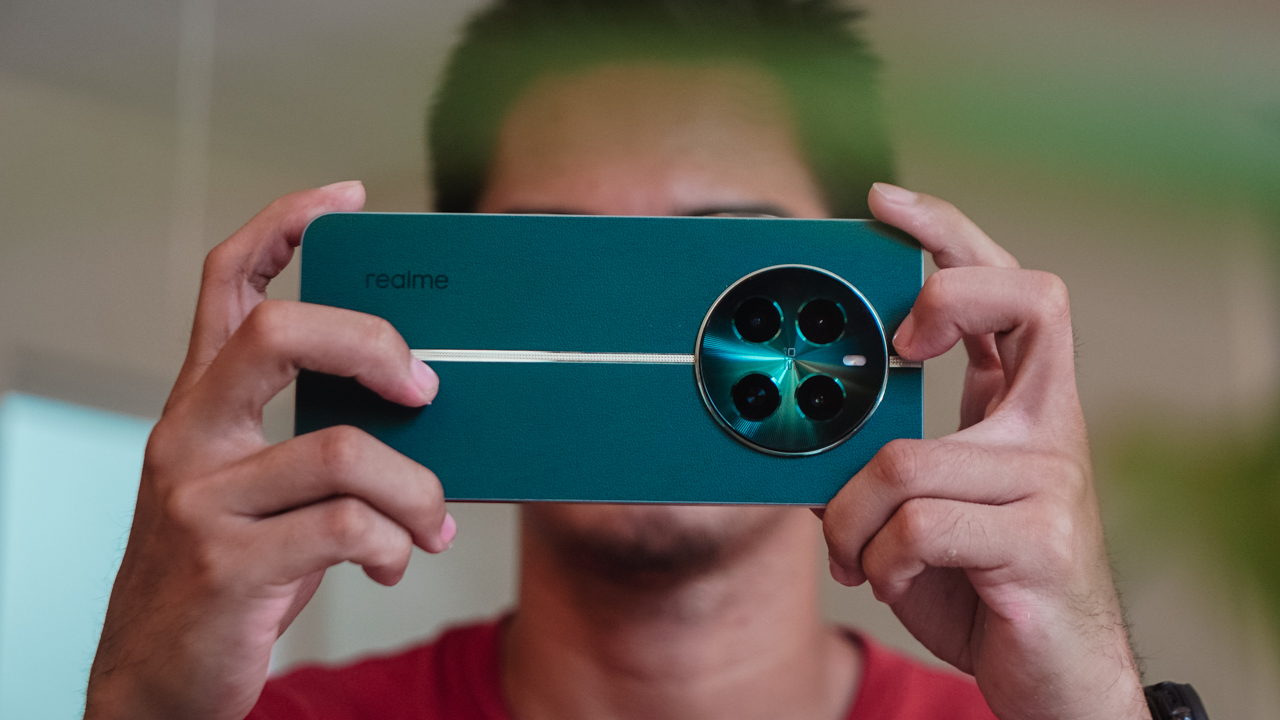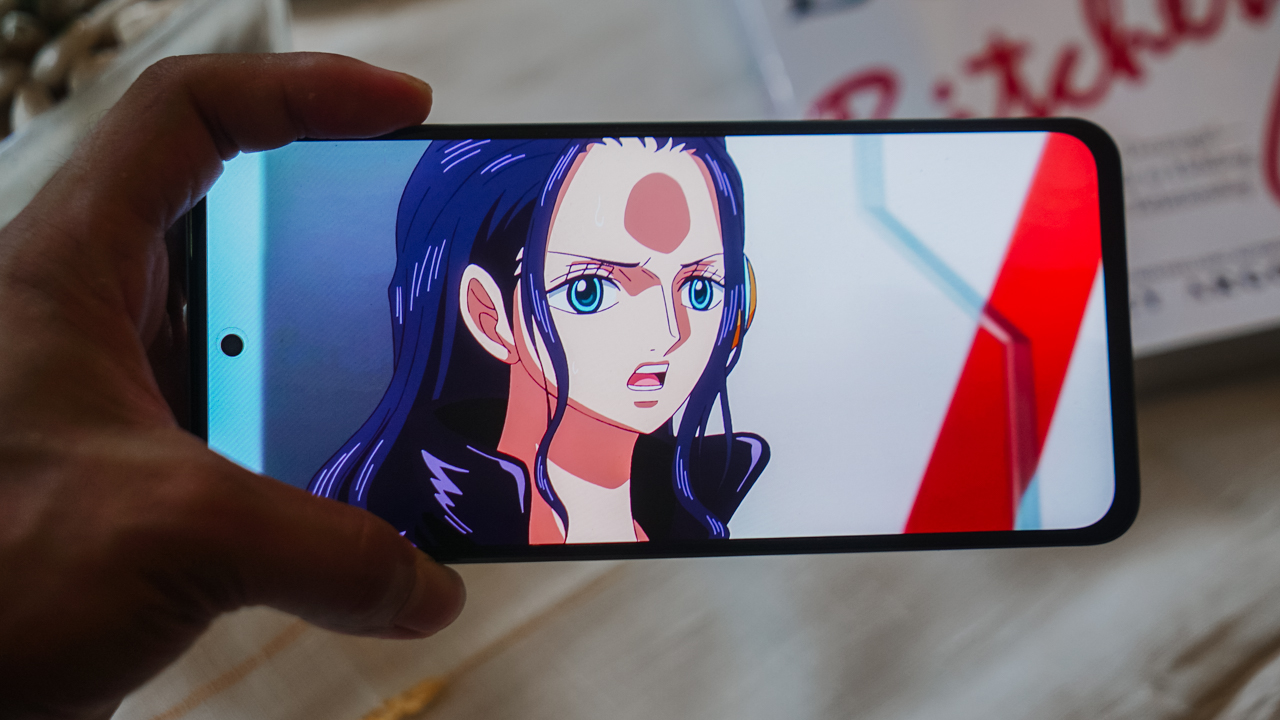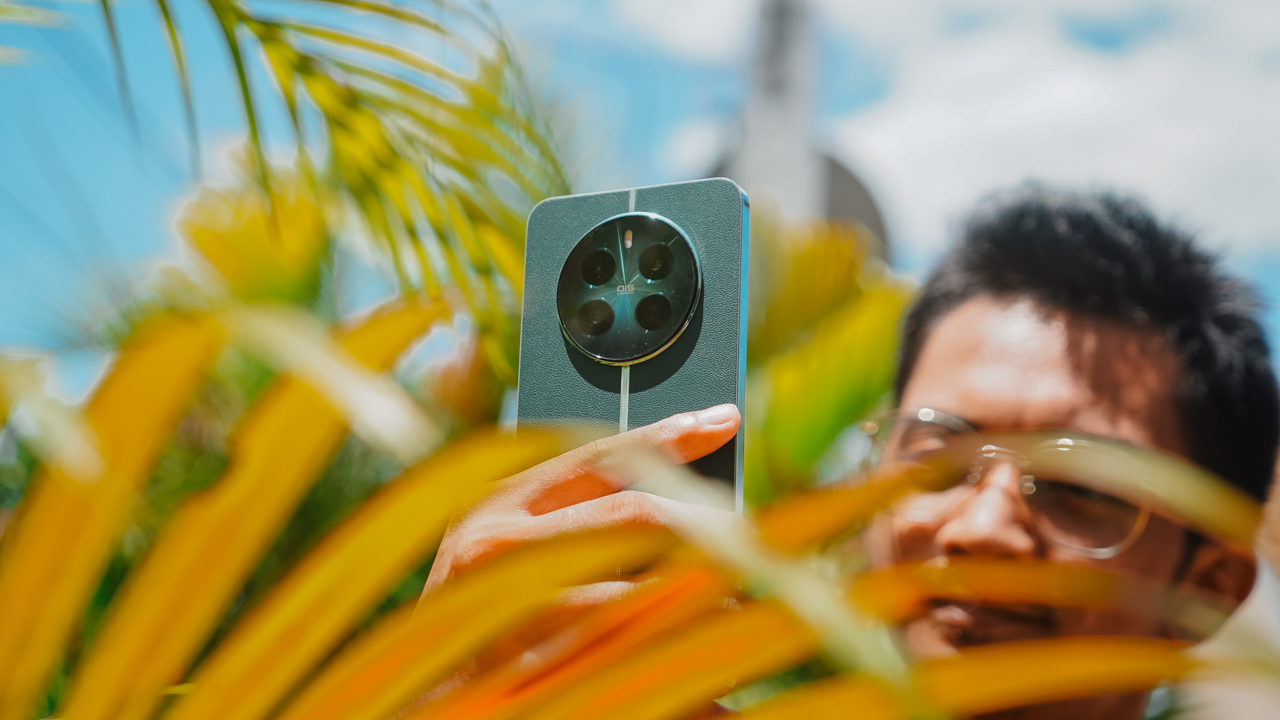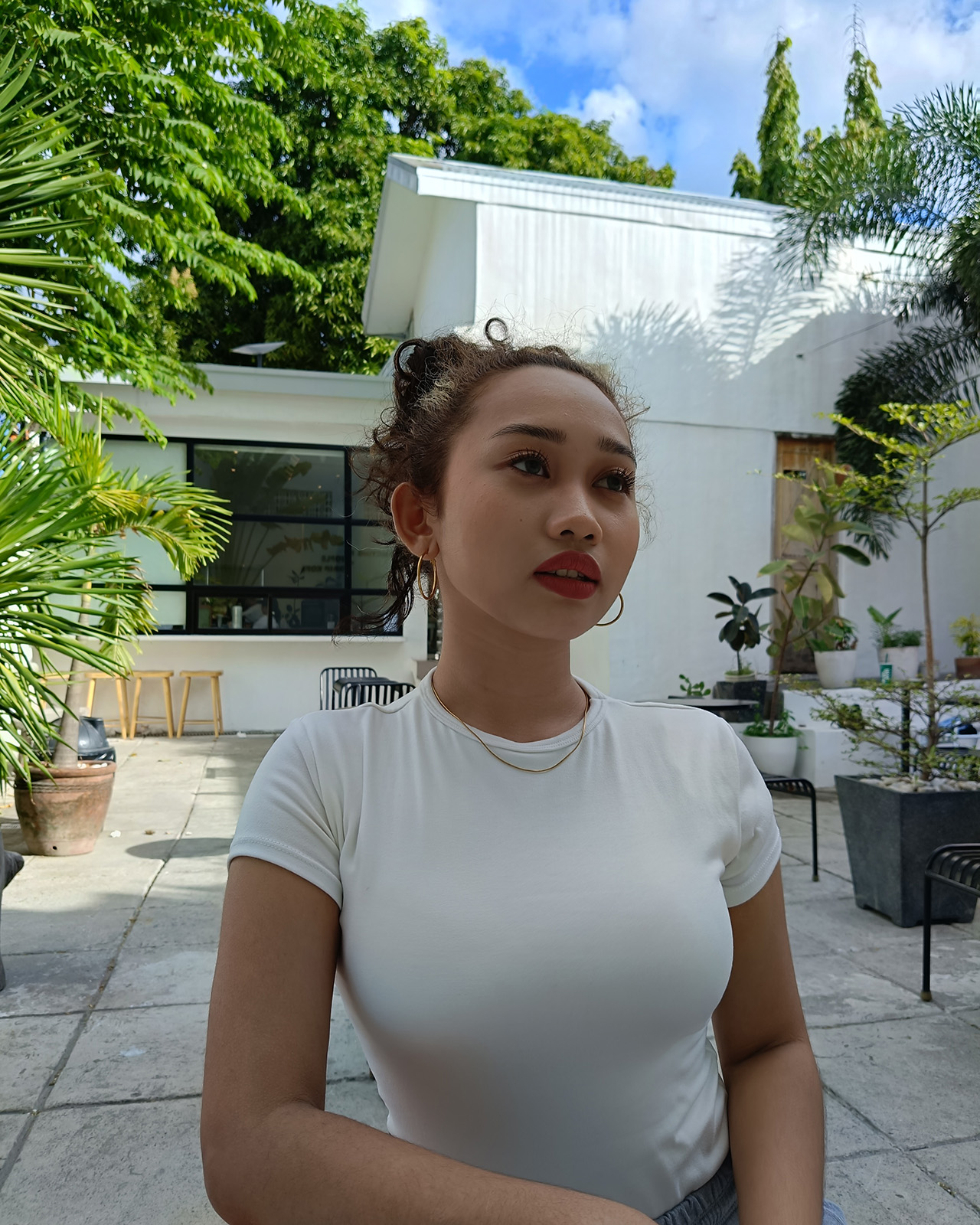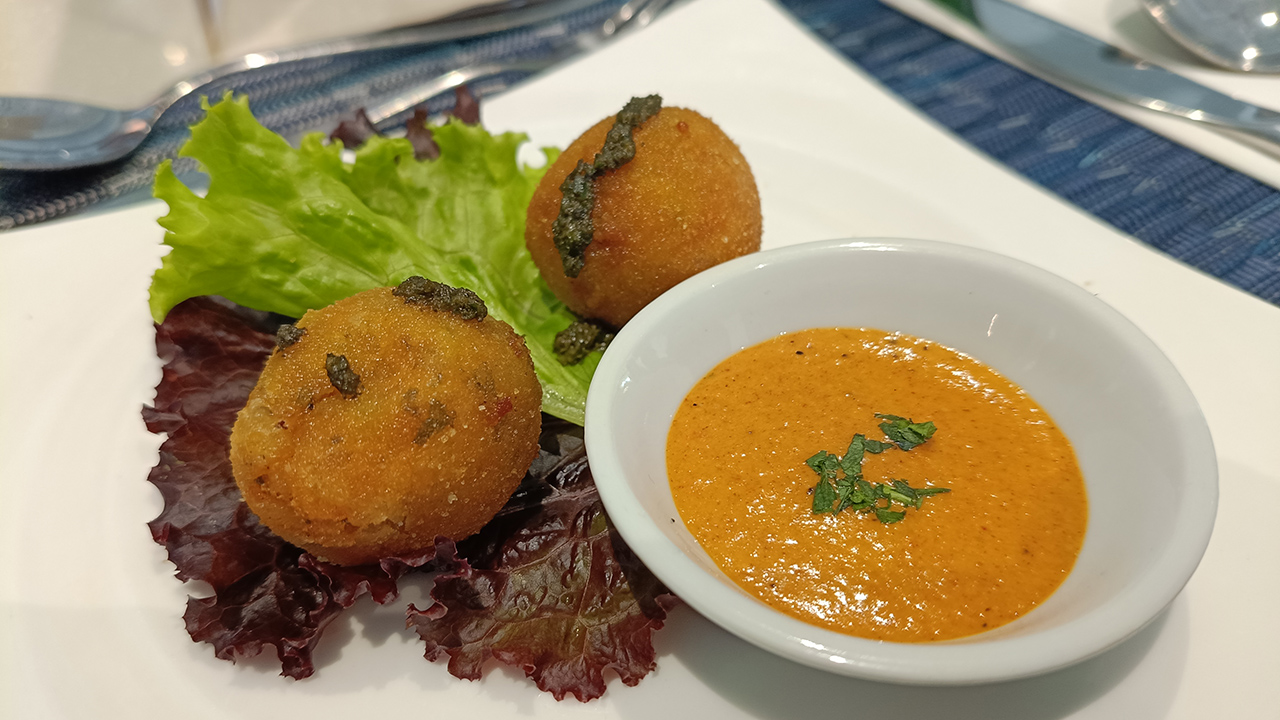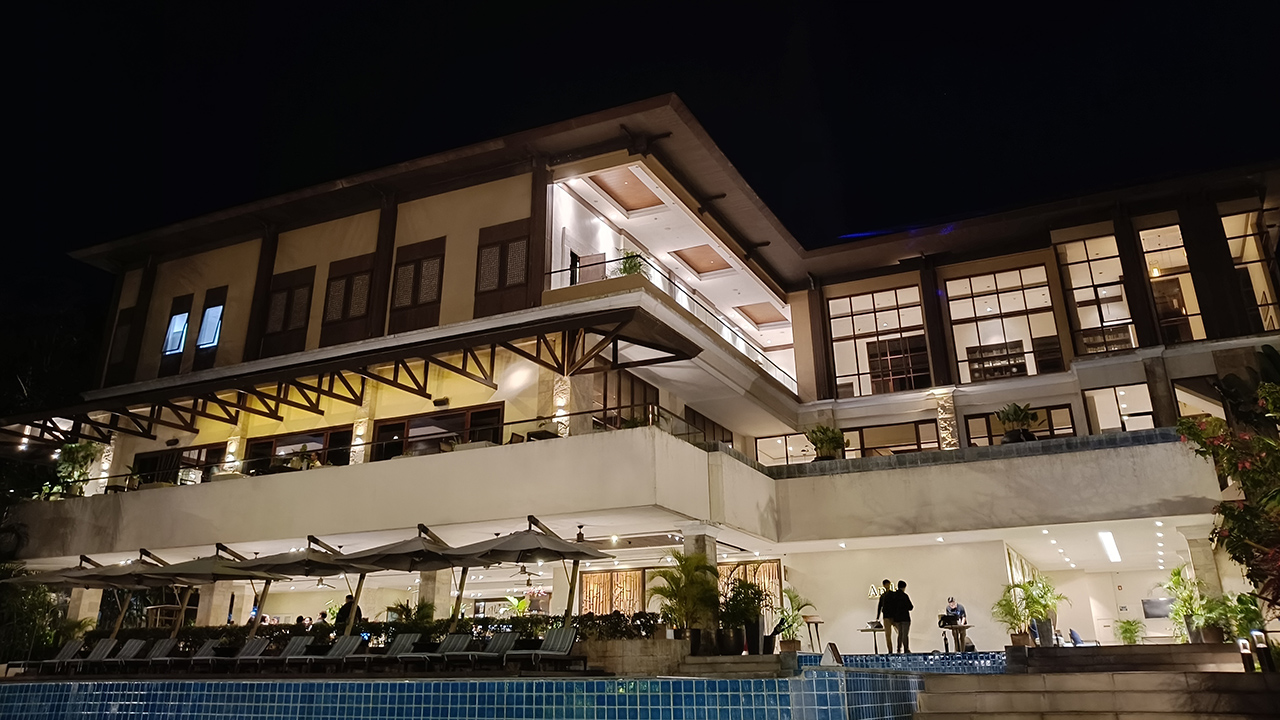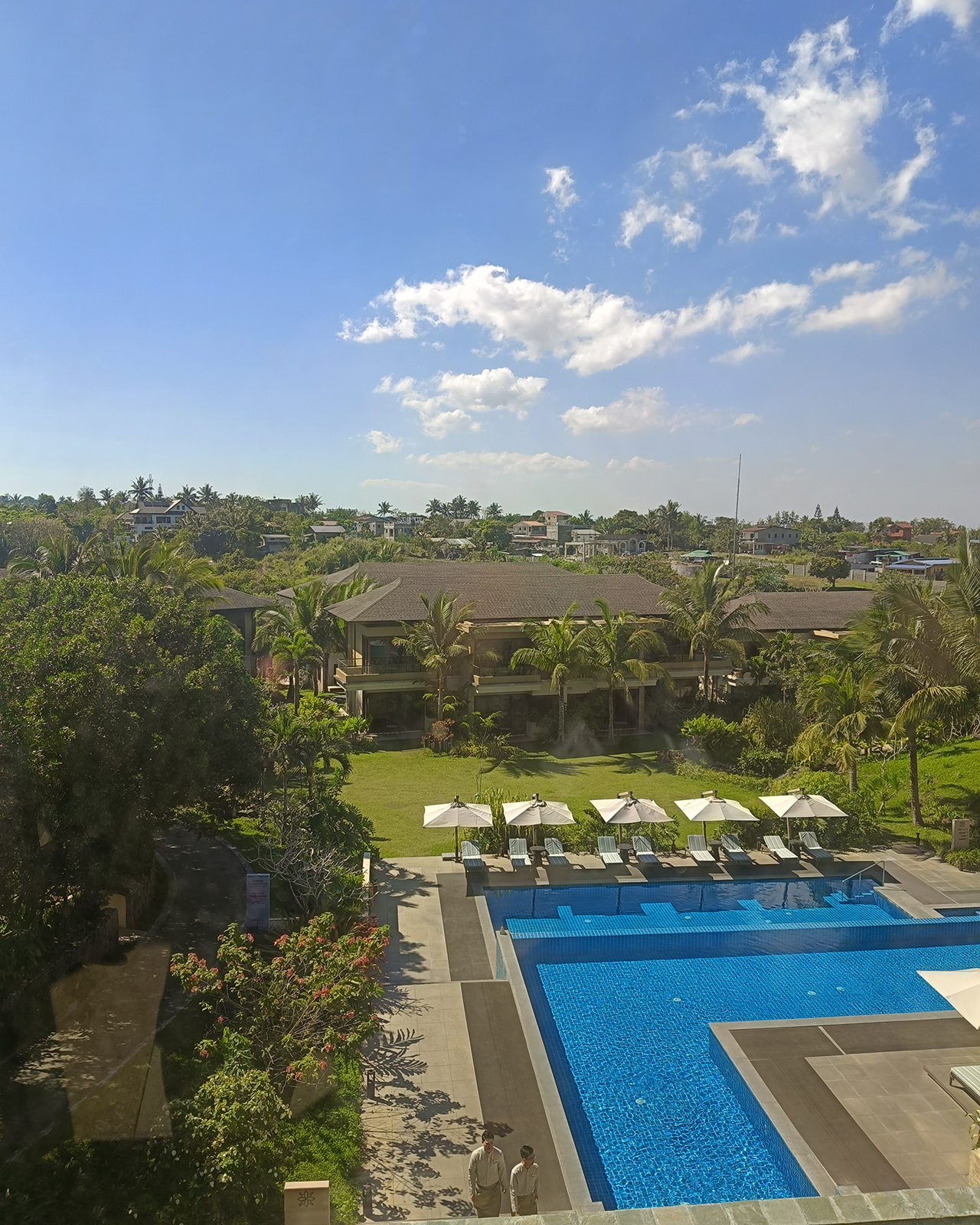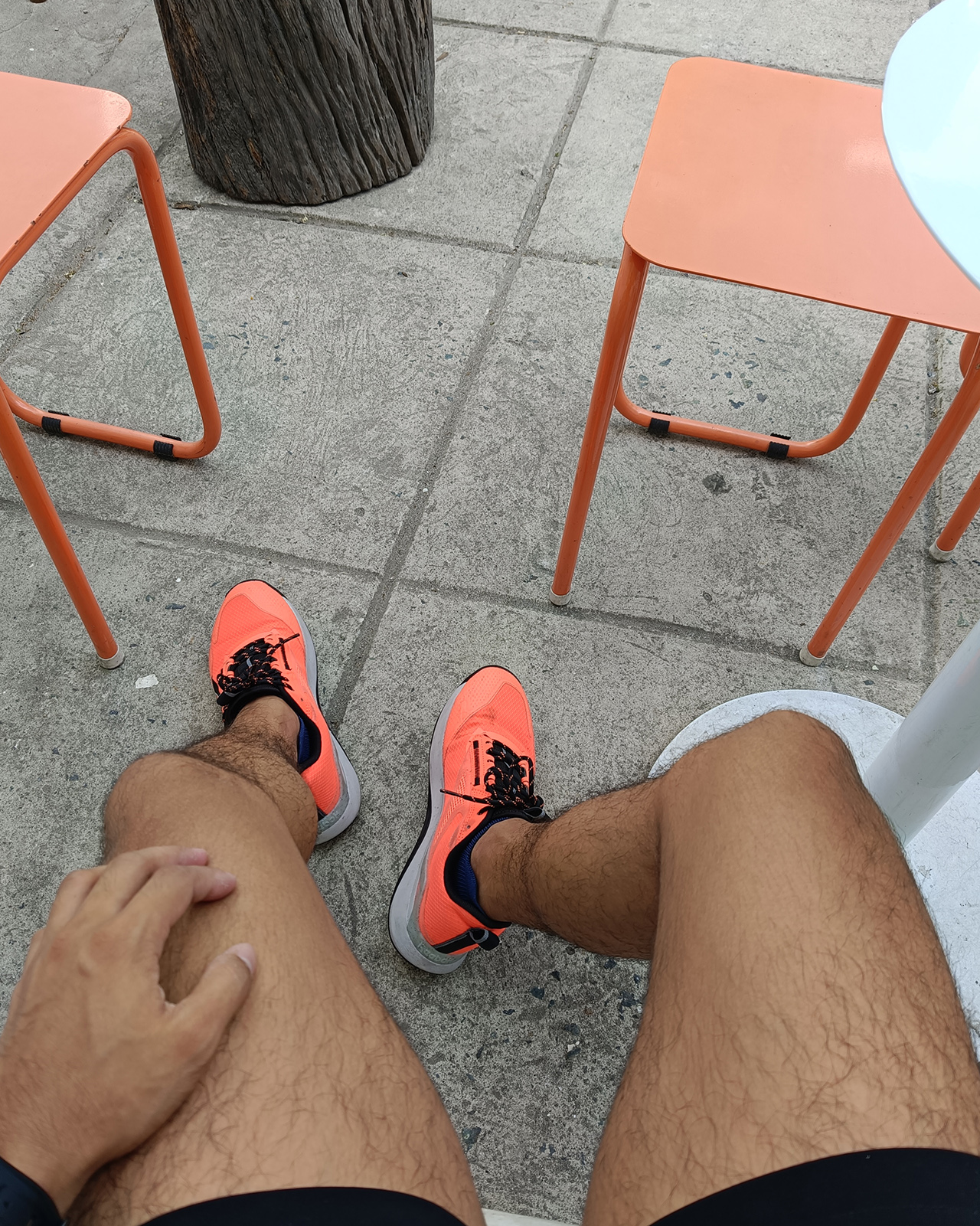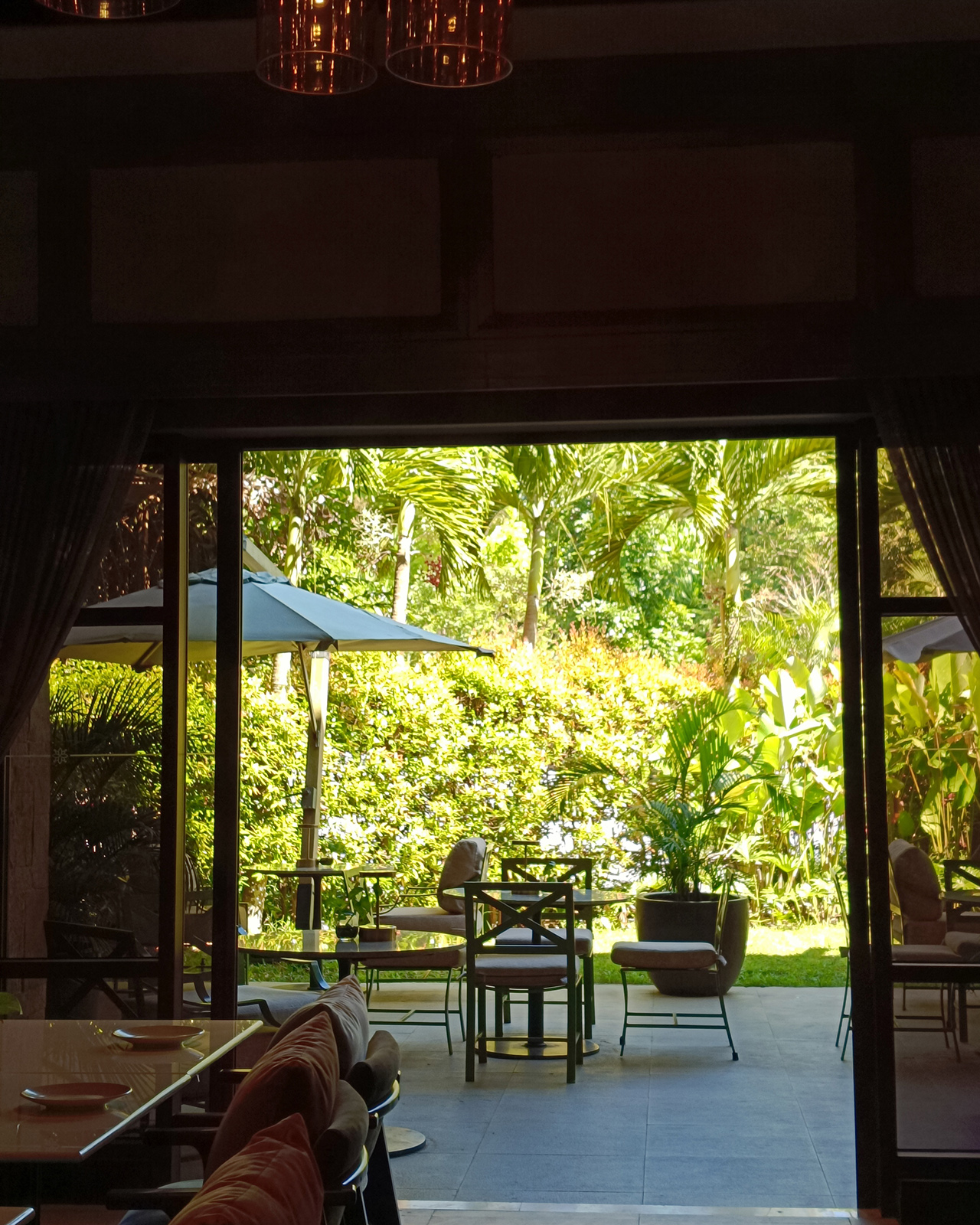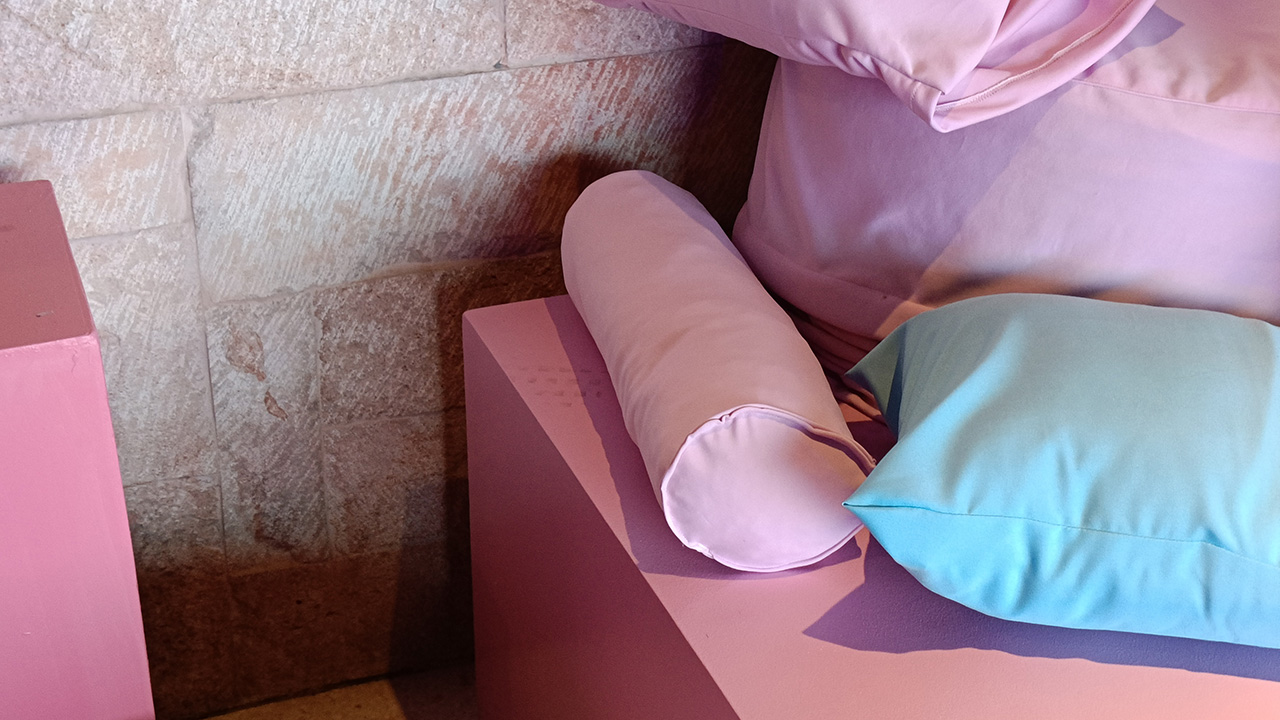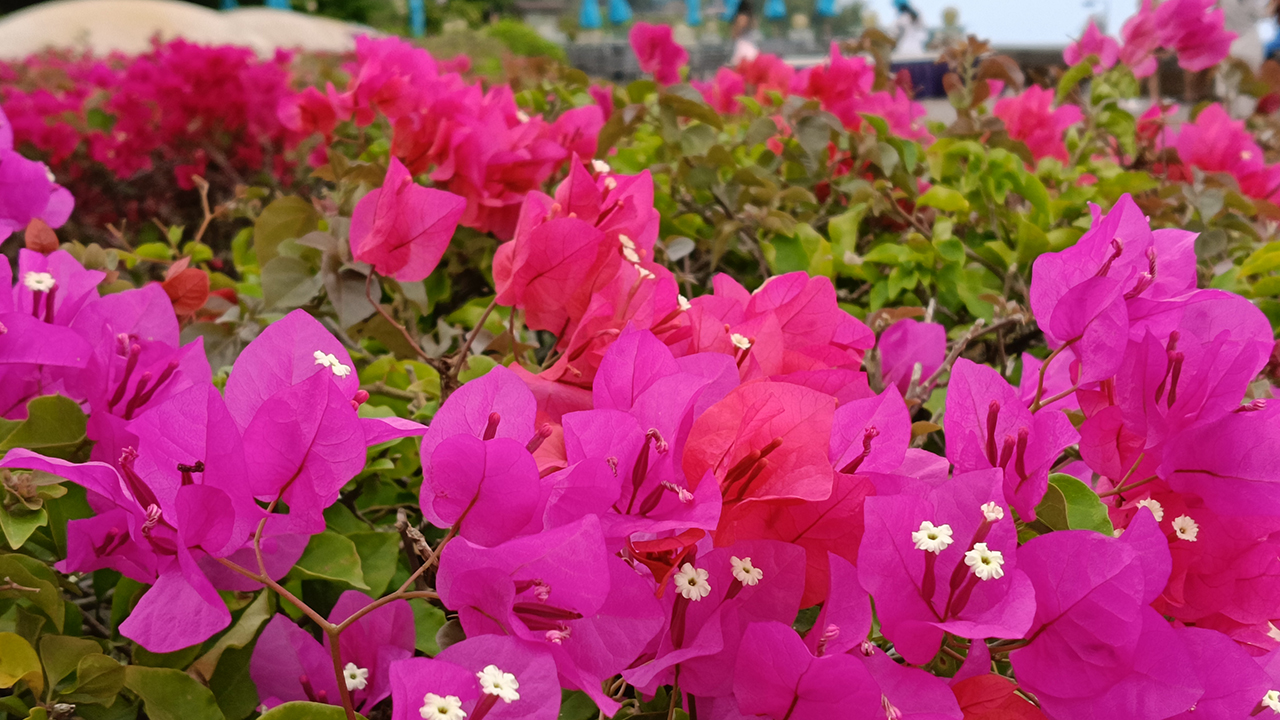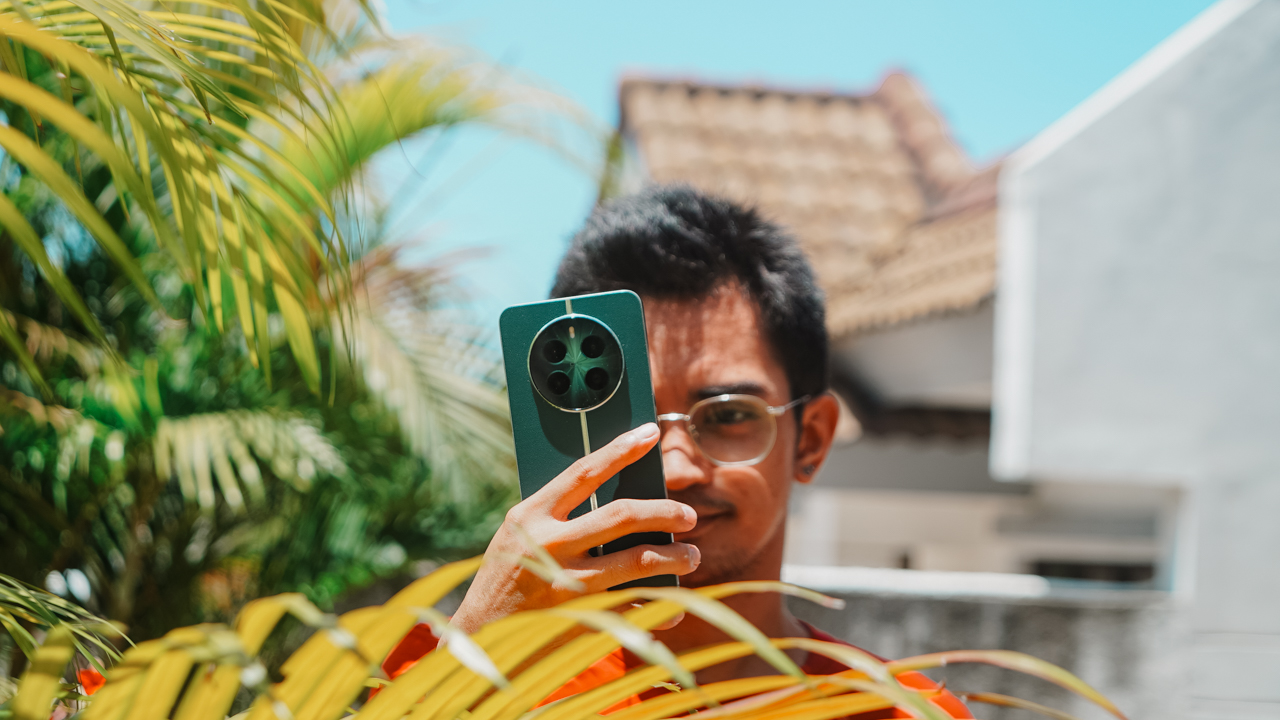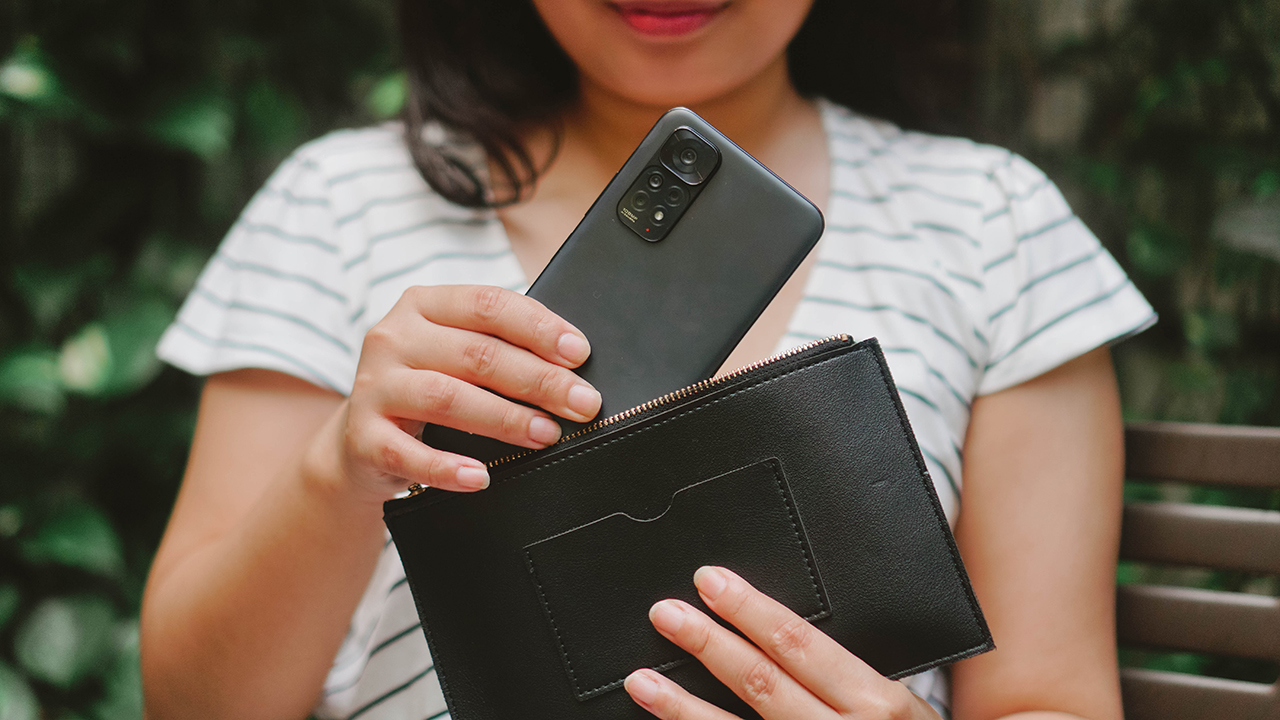
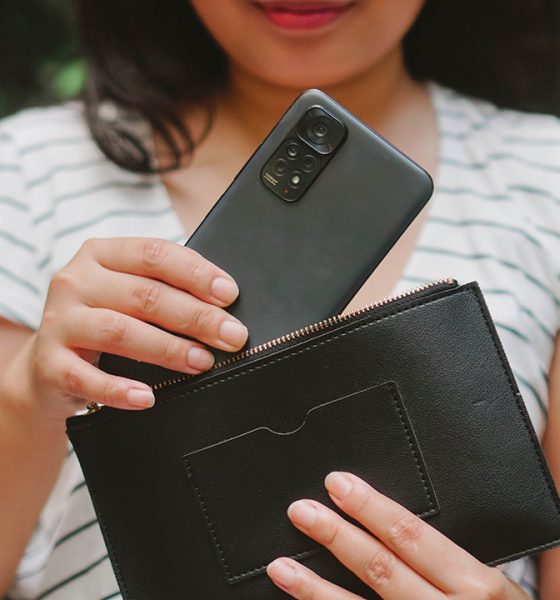
Finding a smartphone is always a unique experience. It’s a case-to-case basis; fitting different preferences of every demographic. The highest variant in a new series always packs the most features, while the lowest ones offer something really basic. What if you find yourself in the middle?
That is the gap that the Redmi Note 11S is trying to fill. A middle ground who gets the basics with a lot more to offer, without being too overbearing.
Design
From the get-go, the Redmi Note 11S resembles the signature design of its lineup. While the Redmi Note 11 Pro can be easily recognized with its taller build, the Note 11 and Note 11S might be too familiar in both front and rear.
The untrained eye might get mistaken in distinguishing this one apart from its vanilla sibling. However, the key is checking the camera modules. The Redmi Note 11S sports a whopping 108-megapixel sensor behind an f/1.9 lens, as compared to the Redmi Note 11 which only has a 50-megapixel sensor behind its f/1.8 lens.
The unit I have comes in Graphite Gray, which seemed dull especially when you don’t slap a funky case. Don’t consider that jelly case, it’s ugly.
There are other color options for the Note 11S: Twilight Blue and Pearl. I personally would love to have used the Pearl Note 11S for its luxurious feel and smooth texture. The rear uses a matte-finish design that tries its best to resist fingerprint smudges.
With Graphite Gray (or any dark-colored smartphone in my experience), certain angles can show subtle smudges. White paint would’ve elevated the Note 11S as a premium-looking midrange smartphone.
It has the makings of a premium looker, at least the first time you touch it. Stylish design? Check. Subtle curves to make your grip comfortable? Check. Matte-finish? Check. And its texture? Oh, it’s so smooth you can’t keep your hands off it.
Display
Upfront, you can find the Redmi Note 11S looking like an actual midrange smartphone. The bezels help bridge the curved rear for a flat-edge design on its display. It’s giving a’ best of both worlds’ vibe, allowing you to enjoy the phone comfortably while keeping yourself entertained.
But of course, let’s talk specifics. The Redmi Note 11S sports a 6.43-inch FHD+ AMOLED DotDisplay with a 180Hz touch sampling rate. There’s an option to use a 90Hz refresh rate, but that’s barely consequential in the grand scheme of things. At least, for casual users like my best friend Nicole who had a great time using the smartphone for a day.
What we like the most is how we were able to enjoy catching up with Netflix’s Business Proposal one sunny afternoon in an al fresco cafe.
The colors are vibrant and you can watch the show clearly in broad daylight. The only issue would’ve been the glares if you were checking the screen from an angle. But normally, you’d watch it straight and in front of you.
I’d call it an entertainment powerhouse in the midrange department if only its audio experience was way louder. Despite sporting two linear speakers on its top and bottom sides, the Note 11S would still make you want to connect it to a Bluetooth speaker or a pair of wireless earbuds for better sound.
Camera
What I’m excited the most about the Redmi Note 11S is how it offers a 108-megapixel camera using Samsung’s HM2 sensor. For its price, can its sensor and MediaTek Helio G96 octa-core processor work hand-in-hand to produce stunning photos?
Aside from the 108-megapixel main camera, the Redmi Note 11S is equipped with an f/2.2 8-megapixel with 118° field-of-view (FOV) ultra-wide camera, an f/2.4 2-megapixel macro camera, and an f/2.4 2-megapixel depth sensor for its quad rear camera setup.
On the front, it uses an f/2.4 16-megapixel front camera situated in a punch-hole cutout. Let’s see how the cameras fare!
108-megapixel goodness
Using the 108-megapixel camera mode, I was able to capture highly detailed yet somewhat underexposed photos. Of course, it bins the photo like any other 108-megapixel camera. The process is always the same.
Frankly, an everyday user wouldn’t feel compelled to use the 108-megapixel on a daily basis. But it’s a nice feature to have especially when you consider printing your photos in some way in the future.
The captured photos doesn’t look aesthetically pleasing, especially with the food part, but I like how it’s realistic to the sceneries I captured. The bluish tint is reminiscent of photos taken with Samsung’s flagship smartphones. But of course, we knew that already — it uses a Samsung HM2 sensor after all.
Regardless, the natural photos taken allows someone to edit and post-process their photos according to their preference. It offers the flexibility you might need if you ever use the device for creative purposes.
Taking photos using the default mode
I’m a fan of taking quick photos — no fancy modes, no gimmicky features, just plain ol’ snap of a memory I’m trying to preserve. And most people do, too. It’s not everyday we get to use these different modes our smartphones offer. At the end of the day, we need a camera that helps capture whatever we want to take.
The Redmi Note 11S might not be a great option for most people who have been exposed to highly-saturated and AI-processed photos that other smartphone brands offer. Though a bit underexposed, I like how the Redmi Note 11S doesn’t color-correct or adjusts the white balance automatically.
It captures the same vibe and scenario as what I’ve seen with my eyes. Since I tend to plaster Instagram filters on my photos before uploading them on social media, I’m happy to report that any filter would work nicely when applied to the photos taken using the Redmi Note 11S. No overexposed or underexposed captures, just balanced shots that you can modify to your liking.
Trouble in focus and details
Taking photos indoodrs is quite troublesome for the cameras, as the Redmi Note 11S struggles in producing a shallow depth-of-field (or background blur as some people describe it). Not to mention, details are slightly blurred and softened when it’s struggling to retain it.
The beauty of zoom
Ever since Vincenz, our photography expert, taught us the beauty of using 2x or 3x zoom, I found myself using it on a more regular basis. And that’s where you can see the camera prowess of the Redmi Note 11S.
Of course, it’s far from perfect. But using the 3x zoom removes the unnecessary distortion that the wide camera causes. Not to mention, it has a better grasp on the shallow depth-of-field produced.
While some users will scrutinize these and say their phones have better photos, please be reminded that this is a midrange smartphone. Like the words my BFF said to me after we took some shots, “This is so much better than my Huawei nova 3i.”
Going wide
Now, this is where I’m going to be torn. Using the ultra-wide angle camera, the Redmi Note 11S produces severely underexposed photos. Its details were compressed, and were easily noticed when I padded a brightening filter from my collection.
I personally like ultra-wide angle modes, but the one on the Redmi Note 11S is something that you tolerate rather than celebrate.
Portrait
The Redmi Note 11s’ Portrait Mode is far from perfect. But the same goes for every midrange smartphone trying to promote this feature that were never fully perfected in the past few years.
The background blur was still too strong, and the processed photo finds it hard to delineate the subject. If you can peruse, the lower left part of the portrait is close to being sharp. Where did that background blur go?
But better selfies, yay!
If there’s something I really love about the Redmi Note 11S, it’s the selfie cameras. It continues Xiaomi’s legacy when it comes to selfie cameras — which I discovered first when I used the Mi Mix 3.
Unlike selfies from other Chinese smartphones like Huawei, vivo, OPPO, and realme, Xiaomi’s selfies manage to retain details while keeping you fresh. It pads a thin layer of beautification to make sure you don’t look like you just came out of a battlefield. There’s an additional post-processing, but not as intense as other brands where you already look like a Barbie or Ken Doll.
There’s also a wider option when taking selfies so you can fit in nicely during couple or group photos.
The experience
If you haven’t noticed, the Redmi Note 11S is pegged as the camera phone to consider in the Redmi Note 11 lineup. The Redmi Note 11 is too vanilla, and the Redmi Note 11 Pro 5G is geared towards power users.
This is why the focus of this review leans more on the camera performance. But of course, we still tested it out. The Redmi Note 11S is powered by a 12nm MediaTek Helio G96 octa-core processor along with a Mali-G57 MC2 GPU.
On paper, you know it can let you play smoothly. I tried playing Honkai Impact and Sprite Fantasia, and while the smartphone didn’t make me want to play games the whole day, it packs enough power to run the titles properly. I didn’t experience overheating — something that usually concerns me when it comes to midrange smartphones.
The unit I had sports an 8GB LPDDR4X RAM and a 128GB UFS 2.2 internal storage. Running on MIUI 13 based on Android 11, the Redmi Note 11S gave a seamless experience switching between apps and multitasking. It was lag-free and animations run smoothly.
More importantly, we were able to use the Redmi Note 11S throughout a day of taking photos, using messaging apps, being connected to the Internet to communicate and upload on social media. By the time I arrived home, the phone still had plenty of juice — 30 percent coming from 95 percent of a 5,000mAh battery.
I waited for it to drop to 20 percent before fully charging it to 100, and it only took 45 minutes to juice up with its 33W wired charger.
Is this your GadgetMatch?
The Redmi Note 11S is far from perfect, and it’s unfair to put it in a pedestal since it’s a smartphone under the lower midrange lineup. But for the price it commands, it’s a package that you might want to consider if you’re in the market for a new midrange smartphone.
Everything about the Redmi Note 11S is made for the everyday consumer, with only a bit of a highlight on its camera system. You can watch your favorite K-dramas, play games when you’re bored, take selfies, and capture everyday memories. It’s a solid daily driver that won’t break the bank.
More importantly, it has features that you’d love to see in a midrange smartphone: Side-fingerprint sensor, 3.5mm headphone jack, Dual SIM and MicroSD slot, and an IP53 certification.
The Redmi Note 11S retails for PhP 12,999. It’s available in Xiaomi’s Authorized stores and online channels such as Shopee.

Reviews
Challengers review: A thrilling drama wrapped as a tennis anime
Catch it in Ayala Cinemas starting April 24th

Tennis is more than just hitting a ball really hard with a racquet. There are player tics, serving techniques, mind games, and, of course, drama off the court. Challengers, starring Zendaya, takes the entire game and turns it into a dramatic thriller worthy of Wimbledon.
In Challengers, Art Donaldson (Mike Faist) is an aging tennis superstar desperate for one more big win. His wife Tashi (Zendaya), a retired tennis star in her own right, does everything to coach Art back to his winning ways. Opposite them is Patrick Zweig, a former-friend-turned-rival, facing Art in the final match of a Challenger.
As premises go, Challengers seemingly presents a straightforward sports drama. It’s a simple one-versus-one, after all. However, the film’s 2-hour-plus runtime hides a more complex drama.
The second-strangest ménage à trois in film
The film starts in media res: the first set of the final match. It doesn’t tell you who Art, Patrick, or Tashi is. It’s just a friendly match. There are, however, questions abound. Why is Zendaya’s character looking intently at one of the players? Why is the other player concerned that she is looking at his rival and not him? Who are these people?
Before you can ponder each question, the film takes you through multiple time jumps. The earliest (and longest) of which — thirteen years ago — sets up the story. Art and Patrick are two best friends and tennis prodigies teaming up to decimate the competition at their school. Everything changes when the two friends catch a match of another young prodigy, Tashi Duncan.
Both friends engage in a friendly competition to see who can successfully flirt with her. The sequence ends in the second-strangest ménage à trois committed to film. (To see the strangest one, catch Alfonso Cuarón’s Y tu mamá también, a clear inspiration to Challengers.)
The time jumps don’t end there. The story quickly volleys back and forth between different times in the past and the present, including years, months, weeks, and even hours ago. Sometimes, the skips result in the cinematic equivalent of whiplash from watching a tennis ball rapidly travel from left to right. But if you just follow the ball, it ends with one of the most thrilling, edge-of-your-seat dramas this year.
Blink and you’ll miss it
Despite how creative the time skips already are, Challengers shines with its subtler elements: the tiny movements, the tics that seasoned sports watchers can catch. Much like how a play-by-play commentator directs a viewer’s attention to what makes a player tick, the film subtly shows you elements of an even deeper story that it may or may not expound on.
Early on, Challengers shows a blink-and-you’ll-miss-it scene featuring Tashi’s knees. If you weren’t paying attention, you might have missed a scar from a surgical incision, hinting at why Tashi retired from the sport.
In that particular example, the film does dwell on it a bit in a past flashback. However, there are plot points that the film just drops on audiences with nary an explanation. For example, you might see telltale injection marks up Patrick’s wrist or a short-but-telling rehab session for Art. The film drops these nuggets only for the viewer to ponder. They’re short, but they paint a compelling picture to complement the action on the court.
It’s a tennis anime
In essence, Challengers is just about a tennis match between two emboldened competitors. However, like an anime battle that takes ten episodes to resolve, the film understands that the sport is not just about results: it’s about all the tiny movements, strategies, and dramas. If Wimbledon was this thrilling all the time, I should probably tune in a lot more.
Challengers shows exclusively in Ayala Cinemas starting April 24th.
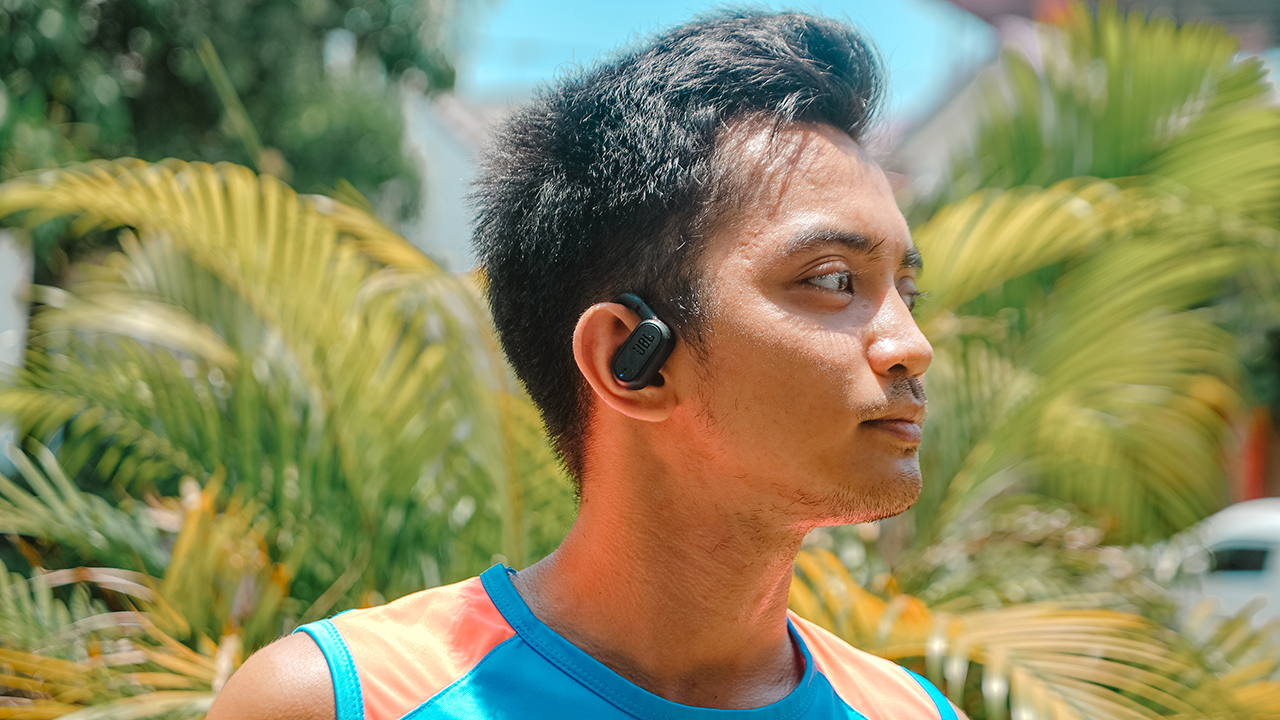
Running has been a form of meditation for most people. To some, it’s a time where your mind goes blank, allowing you to have a break from your stimulated mind.
For others, like yours truly, it’s a moment to sort out thoughts and emotions after having a preoccupied day. A common denominator between runners is doing the activity alone, accompanied only by their smartwatches, a hydration flask, and good music.
I’ve been using true wireless earbuds to accompany me on my runs, but the advent of JBL Soundgear Sense piqued my curiosity.
What is it like to use open-ear headphones when out for a run? To find the answers, I used the Soundgear Sense during my ongoing race season.
Take the long way home
As I put on mileage for my upcoming races, I have been required by my coach to add more slow runs to improve my aerobic base. That entails long, boring runs for an hour or two.
Imagine the agony of finishing a minimum of 10-kilometers by relying on your heart rate and not your pace. That was when I sought solace from the JBL Soundgear Sense.
I didn’t realize that having open-ear headphones would allow me to take on scenic and busy routes without worry that a car might hit me.
Unlike when I use true wireless earbuds that fit snugly in my ears, the Soundgear Sense are hooked and clipped on the curve of my ears without covering the ear canal.
This allowed me to hear my surroundings while still enjoying my favorite songs from Taylor Swift and BINI, a rising P-pop girl group.
Open but still private
Even if the Soundgear Sense has an open-ear design, rest assured that there’s zero sound leakage. JBL’s OpenSound technology made sure that the sound pressure is directed through waves towards the ears, while also reducing sound dispersion.
There’s a certain shame in having people find out whom you’re listening to. Maybe because you don’t intend to share the music you’re enjoying. But if you opt to share your jam, might as well have a Bluetooth speaker, right?
That’s why I liked the idea of keeping it open but still private — in relationships and my wearable. I get to enjoy “Pantropiko” and “Salamin, Salamin” by BINI all by lonesome, while still attuned to my surroundings.
It also helps that each earbud has a 16.2mm driver with a unique bass-enhancing algorithm. The sound allowed me to immerse myself in the songs I was playing, but still aware of the external noises of the streets. Somehow, the Soundgear Sense felt like a second, inner voice whispering thoughts through music.
Hybrid design for hybrid athletes
I don’t just run. I also lift on the same day right after running. Being a hybrid athlete allows me to prepare my body from the demands of multi-sports training and partaking on a Spartan race.
I like how the Soundgear Sense has a hybrid design that makes it apt for different type of workouts. Its adjustable earhooks are clipped perfectly, which doesn’t fall off even when I’m doing plyometrics. It’s also steadily in place even if I sprint and/or do some speed training.
Even when I’m heavily sweating, the Soundgear Sense didn’t slip off. With an IP54 rating, it’s dust-, splash-, and sweat-resistant.
Also, the way it’s designed is secured to fit on whatever activities you have, regardless of sweating. Except gymnastics and parkour, though.
The Soundgear Sense might fall off after you hang or flip from those extreme activities that require being suspended in the air.
For added security, there’s an included neckband inside the box. However, I hate having something dangling on my nape so I never used it.
Moreover, I couldn’t last more than an hour having it clipped even with a supposed hybrid design. It hurts my ears eventually, and I feel like someone was pinching my ears and I couldn’t do anything.
If I have runs for more than an hour, I’d opt not wearing both earbuds.
Easy connectivity
One thing I like about JBL is how easy it is to connect your wearables to your smartphones, be it an iPhone or an Android.
Once both devices are paired, flipping open the case will instantly connect the Soundgear Sense to your smartphone.
While running, I don’t have to constantly check my phone since the Soundgear Sense, along with my Garmin epix Pro (Gen 2), helps me stay connected. With just a single flick on the earbud, I can control my music, volume, and calls.
My friend, Betty, called me one time while I was out for an easy run and she barely realized I was running until I gasped for my breath when running on a steep incline. It’s convenient to have crisp and crystal-clear calls within your reach.
And to make it more convenient, the touch controls can be personalized to your liking. On the left earbud, it’s usually the volume control.
One tap and it increases the volume, while double tapping decreases it. When someone calls, you can double tap to respond or you can tap and hold to reject the call.
The right earbud uses the same call control, but it’s automatically set for playback control. You can switch earbuds depending on the gesture you prefer.
All of these customizations can be done using the My JBL Headphones app.
Definitely long lasting
I have had the Soundgear Sense for two weeks now, and both earbuds still have a half battery life from a single charge. As of writing, the left earbud still has 51% while the right earbud has 56%.
Thanks to its charging case, both earbuds keep recharging every time they’re stowed inside.
But if you’re wondering why the left earbud has a lower battery life, it’s not because I spend too much time watching adult-rated content.
A lot of times, I run with just the left earbud clipped on my ear to stay alert from my surroundings. Even with OpenSound technology, I tend to get lost in the music I’m listening to whenever I have both earbuds hooked.
Considering I’ve amassed more than 70km of running mileage for two weeks with almost 10 hours of running, the Soundgear Sense surprised me with its battery life.
I haven’t charged it since then, which made me wonder how fast it would really be, if I get to drain it down to zero and juice it back up to 100. Perhaps, stay tuned on my Instagram and TikTok accounts?
The Soundgear Sense is expected to let you listen wirelessly for up to 6 hours. You get an extended life of another 18 hours through the charging case. A quick 15-minute charge through the Type-C port gives an additional 4 hours of music.
Is this your GadgetMatch?
For an athlete, the JBL Soundgear Sense surely makes every run magical. The design and technology were innovated with runners in mind. The device integrates seamlessly to any type of active lifestyle.
It will boil down to preference, whether you enjoy an open-ear design clipped onto your ears or you’d enjoy an earbud blocking your ear canal.
As for me, I think I’ll switch and pick the Soundgear Sense to accompany me in my race season. It helps me immerse myself in good music, stay connected, while keeping me attuned to my surroundings. This ensures my safety when out for a run.
It’s easily a GadgetMatch for all types of athletes dedicated to fulfilling their training assignments. It’s also for fitness enthusiasts entering their “runnerist” era.
The JBL Soundgear Sense retails for PhP 9,499. It is available via JBL’s website and select, authorized retailers.
Reviews
realme 12+ 5G review: One month later
What is it like to spend a month with a midrange smartphone?

What is it like to spend a month with a midrange smartphone?
For someone spoiled with high-end, flagship smartphones, a watered-down experience terrifies me. I couldn’t fathom using just a midrange smartphone, even if I’m counted as a casual user.
But spending a month with the realme 12+ 5G gave me a new perspective on what midrange smartphones at 2024 can do.
Powerhouse at a fraction
A lot of times, I’ve used the realme 12+ 5G to play Mobile Legends: Bang Bang. I know, I know. It’s 2024 and I’m still playing the same old MOBA but it’s a game I know all too well that helps me de-stress after a long day.
See, I’m an athlete balancing my work and life. Sometimes, I just want to rot in bed while playing on my phone.
The realme 12+ 5G helped keep me sane thanks to its lag-free gameplay. Not once did I feel any heat or slowing down even while playing in an Ultra Graphics and Super High Frame Rate setting.
The Vapor Chamber Cooling System came into play, dissipating the heat so even if under heavy usage, the gameplay is still optimal.
Moreover, the realme 12+ 5G uses a MediaTek Dimensity 7050 chipset. When you combine this with a 12GB dynamic ram that’s expandable through your storage space, you won’t have to worry about a watered-down experience from using a midrange device.
The RAM can take up from 4GB up to 12GB to be re-allocated from the 256GB internal storage. Though, I only used 4GB since I didn’t feel the need to turn it up to the highest configuration. It’s already smooth even when multi-tasking.
It may not be as smooth as the flagship smartphones I held, but it’s enough particularly for people who just needs a smartphone they can use for their everyday lives. However, if you want a midrange device dedicated for an even more intensive gameplay, I’d suggest looking elsewhere.
Daily companion for viewing, listening
When I was on my way home from my training, I drove past a busy road in Pasig City where vendors are in the streets, bystanders are frolicking, and loafers gossip while taking space through the plastic stools they sat on spread out near the sidewalk.
What do they have in common? Smartphones. There was a realization that the Filipino masses rely on their devices to be entertained and connected.
I have a feeling that if I wasn’t a multi-passionate person with an insanely hectic schedule, I’d bury my head on a smartphone, too.
This is where having a spectacular audio-visual performance comes into play, especially for budget and midrange devices. Luckily, the realme 12+ 5G has a 120HZ Super AMOLED Display and Dual Stereo Speakers.
It’s one of the reasons why I started playing Mobile Legends: Bang Bang again when I was decompressing for the day.
Aside from doomscrolling on TikTok, I just like it when the display is fluid, vivid, and smooth while the audio can be as loud and immersive. Unlike most midrange smartphones, the audio-visual performance is always a hit or miss.
Sometimes, they have an excellent screen while the audio suffers, or vice-versa. The realme 12+ 5G just have it both.
Capture it, remember it
The realme 12+ 5G uses a 50-megapixel SonyLYT 600 OIS Portrait Camera, an 8-megapixel 112° wide-angle lens, a 2-megapixel macro sensor, and a 16-megapixel selfie camera on the front.
I used the smartphone to capture photos I send to my loved ones. From selfies, coffee runs, hotel visits, group photos, food shots, and just anything and everything in my life.
The quality for low-light shots is a hit or miss, but for photos taken during daytime and with good lighting? It’s just spectacular.
Here are some sample photos to look at:
Portraits & Selfies
Food
Sceneries
Everyday photos
Real on reliability
The realme 12+ 5G’s battery capacity is just *chef’s kiss*.
Its ability to retain its battery life even on standby is just incredibly helpful for someone who keeps forgetting to charge his devices.
The realme 12+ 5G lasts long enough when out for the day, and even if you spend a lot of hours playing games and doomscrolling.
One time, I played Mobile Legends: Bang Bang for three hours straight from a full charge, and I still had enough juice to keep playing. That 5000mAh battery surely is a lot of juice that doesn’t drain easily. I had to be the one to give up playing since it hurt my eyes already.
Charging it with 67W SuperVOOC, the realme 12+ 5G gets full charge in less than an hour. This is why even if I forget to charge it at night, I just have to plug the charger in the USB-C port while I was taking a bath and prepping for work.
Could’ve been a real premium
Aside from its performance and capabilities, the realme 12+ 5G comes with a strong and beautiful exterior. The unit I have came in Pioneer Green, resembling an emerald-touch of old money.
Without a plastic case, it’s soft, feels luxurious, and easy to hold even with a boxy frame. At a glance, it’s even more beautiful with its luxury watch-inspired design, thanks to designer Ollivier Savéo.
For a midrange device, realme has a knack for making its devices look and feel sophisticated. Furthermore, it’s dust and splash proof with its IP54 rating. It’s a win-win, right? Strong and pretty at the same time.
My only issue would be the realme UI 5.0 based on Android 14 that’s packed with bloatware. Look- and feel-wise, the realme 12+ 5G would be a premium stunner, even with its camera, audio-visual, and battery performance.
But the UI design along with the unnecessary bloatware made it cheap and annoying to look at.
Is this your GadgetMatch?
The realme 12+ 5G delivers what you’d expect out of a midrange smartphone. It’s premium-looking, long-lasting, offers reliable performance, and captures vivid portraits and pictures.
It’s easily a GadgetMatch for casual users requiring enough power and juice on a device that looks pretty and strong. If the realme 12 Pro+ 5G is a midrange marvel, consider the realme 12+ 5G almost the same, but at a lesser cost.
It retails for PhP 19,999 for the 12GB+256GB variant, while the 8GB+256GB unit is priced at PhP 17,999.
-

 Features1 week ago
Features1 week agoFortify your home office or business setup with these devices
-

 Events2 weeks ago
Events2 weeks agoStellar Blade: PlayStation taps cosplayers to play Eve for game’s launch
-

 Gaming2 weeks ago
Gaming2 weeks agoThe Rogue Prince of Persia looks like an ultra-colorful roguelite
-

 Accessories2 weeks ago
Accessories2 weeks agoLogitech unveils G Pro X 60 gaming keyboard: Price, details
-

 Gaming2 weeks ago
Gaming2 weeks agoStar Wars Outlaws release date revealed
-

 Reviews1 week ago
Reviews1 week agorealme 12+ 5G review: One month later
-

 Gaming2 weeks ago
Gaming2 weeks agoLenovo confirms development of a Legion Go 2
-
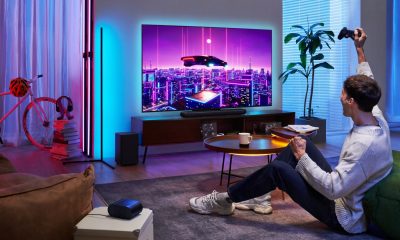
 Deals2 weeks ago
Deals2 weeks agoTCL P635 TV: Big savings for TCL’s anniversary


